

SKIPPY TUMINELLO SHARES EARLY MEMORIES OF THE BUSINESS HIS FAMILY STARTED



SKIPPY TUMINELLO SHARES EARLY MEMORIES OF THE BUSINESS HIS FAMILY STARTED


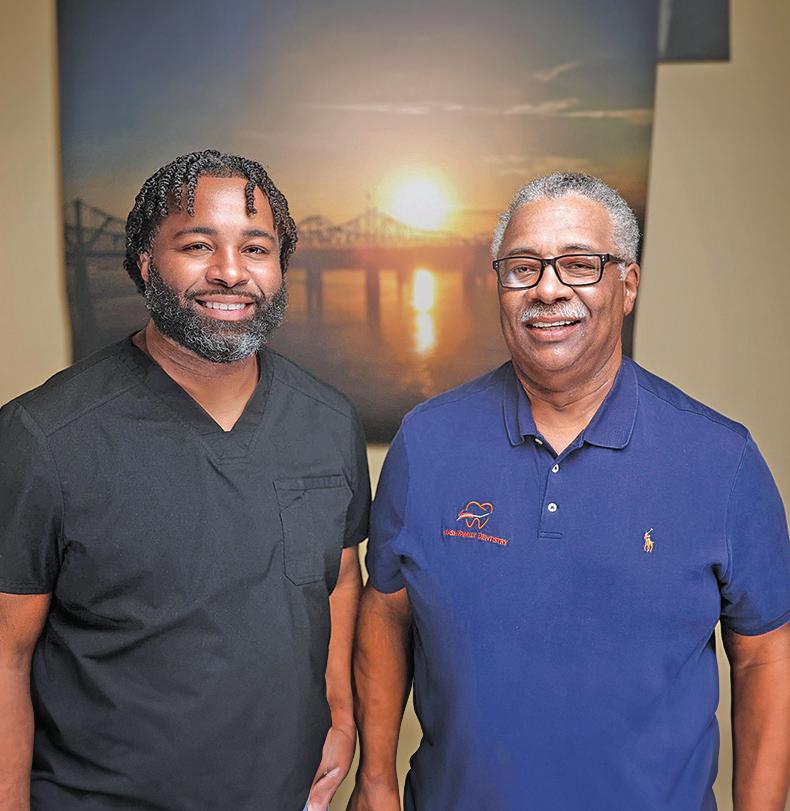






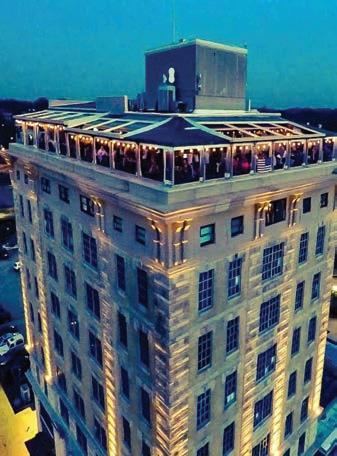








On some days I still have my little heater sitting by my feet keeping me warm, but when I look outside and see buds beginning to form on trees and shrubs, I know spring is near.
Therefore, in this issue of the Vicksburg Living magazine we asked contributors Mary Kaylin Gray and William Furlong to share with readers some of their spring inspired tips on decorating and cooking, respectively.
Mary Kaylin is always so creative, and I just love her suggestions when it comes to prettying a home. And I was so excited when William said he would share his carrot cake recipe with our readers. Carrot cake is one of my favorites, and I can assure you that this recipe is a keeper.
This issue also lent itself to highlighting two local photographers. Evan Farrell is just
setting out on his career, but already making waves. The other, Jack Burns, is a man who thrives on bringing life to the past, be it renovating an old trolley or theater, or building a pinhole camera.
We also have two features that showcase the unending stories of Vicksburg’s history. Cedar Grove is one of the River City’s most iconic antebellum homes. Those who have been around a few years might remember Tuminello’s, which started out as a small mom and pop business that eventually became a notable restaurant throughout the country.
This issue also has some wild and crazy Mardi Gras photos submitted by readers, as well as suggested readings from Lorelei Books.


Administration
Catherine Boone Hadaway
Blake Bell
Vicksburg Living Editor
Terri Cowart Frazier
Marketing
Justin Clarkston
Mallory Hoffman
Jillian Norris
Contributers
Ernest Bowker
Sally Phillips
Ben Martin
Paul Ingram
Audience & Accounting Services
Shandale Goodman
Contact Information
Vicksburg Living 1106 Washington Street Vicksburg, MS 39183 601-636-4545
Vicksburg Living is published six times each year by Vicksburg Newsmedia, LLC, 1106 Washington Street, Vicksburg, MS 39183. Vicksburg Living is a registered trademark. All contents herein are the sole property of Vicksburg Newsmedia, LLC [the Publisher]. No part of this periodical may be reproduced without written permission from the Publisher.
Please address all correspondence (including but not limited to letters, story ideas and requests for reprint materials) to Editor, Vicksburg Living, 1106 Washington Street, Vicksburg, MS 39183.
Vicksburg Living is offered by subscription, and a limited number of free copies are available at local locations. For information on receiving Vicksburg Living at your home, call (601) 636-4545.
Advertising inquiries may be made by emailing advertising@vicksburgpost.com or by calling (601) 636-4545.
Proudly Produced in Vicksburg, Mississippi.

Copyright 2025 by Vicksburg
LLC





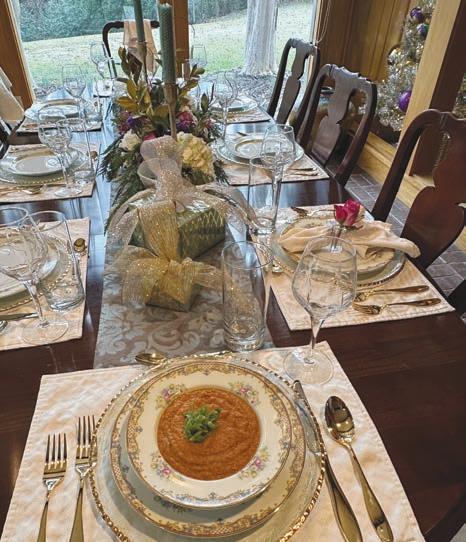
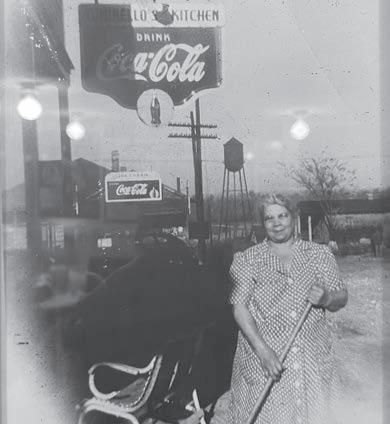
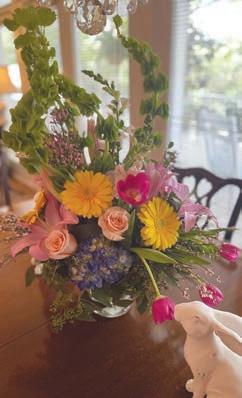
Decorating

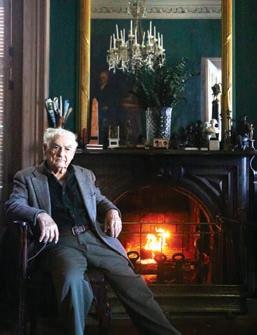









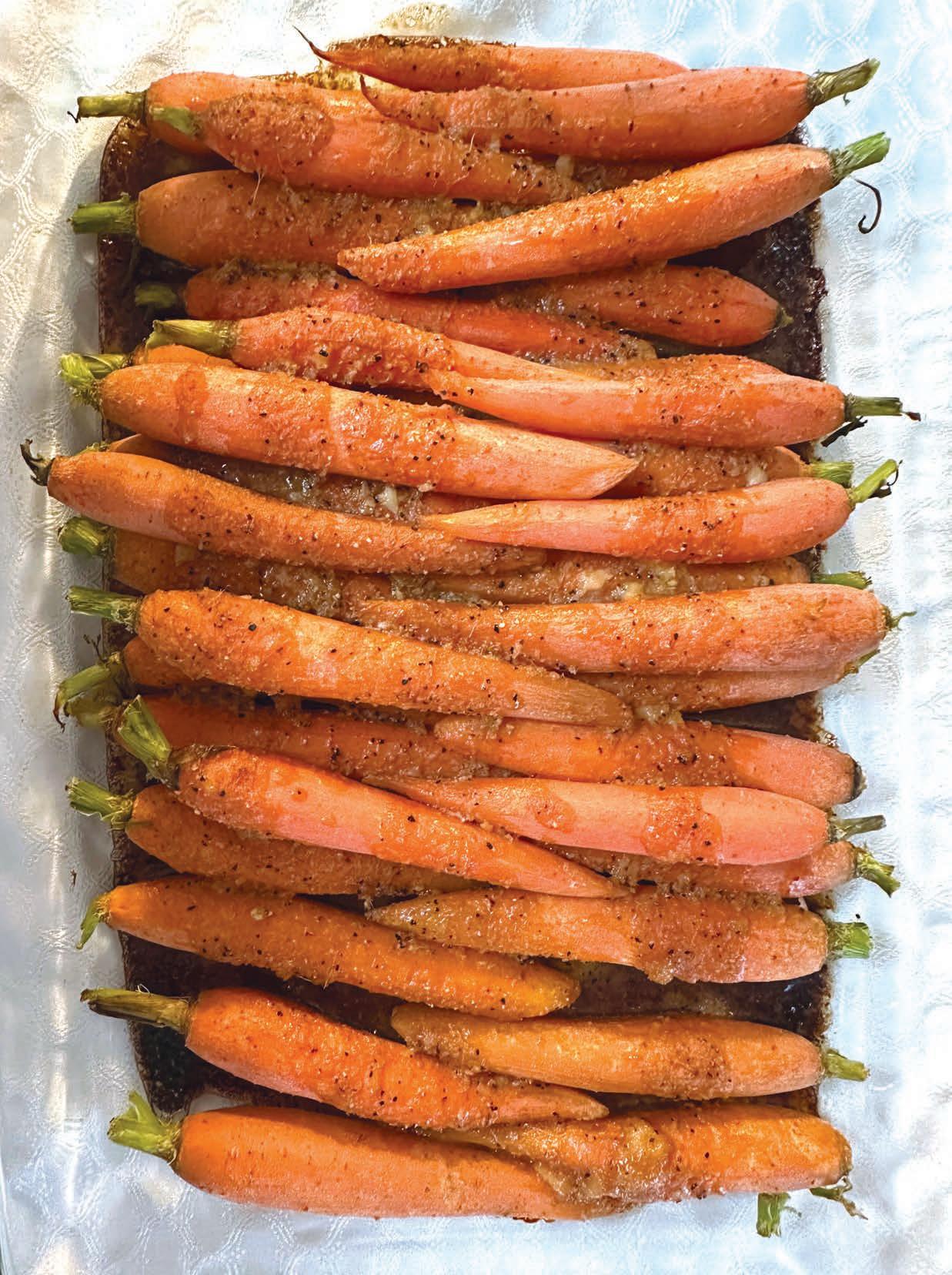


INGREDIENTS
2 Duncan Hines Spice Cake Mixes
1 1/2 cups water
6 eggs
2/3 cups vegetable oil
10 ounces shredded carrots, chopped
3- 8-ounce blocks cream cheese, softened
1 cup powdered sugar
1 tablespoon vanilla bean paste
Toasted and chopped nuts, pecans or walnuts
INSTRUCTIONS
In a mixing bowl, combine cake mixes, water, eggs, oil, and carrots. Divide cake mix evenly between three 9-inch round cake pans that have been sprayed with non-stick spray. Follow directions on the cake box for baking instructions. Hint: if using non-stick cake pans, reduce baking temperature by 25 degrees. Remove cakes when done and cool.
Icing
Use a stand or hand mixer to whip cream cheese. Add sugar and vanilla and whip until soft enough to spread. Divide the icing evenly between the three cakes and spread using a spatula. Stack the iced layers on a cake stand or plate. Sprinkle toasted pecans and walnuts on top.
INGREDIENTS
1 pound peeled carrots with stems cut or baby carrots
2 tablespoons salted butter
2 tablespoons soy sauce
1 tablespoon minced ginger
Pepper to taste
INSTRUCTIONS
Blanche carrots for 5 minutes in boiling water, until tender but not soft. Drain carrots and place in glass casserole dish with butter, soy, ginger and pepper. Roast at 350 degrees for 30 minutes.
INGREDIENTS
1 pound of shredded or shaved carrots
½ cup yellow raisins
½ cup raisins
¼ cup olive oil
Juice of 1 lemon
2 tablespoons Dijon mustard
¼ cup apple cider vinegar
½ bunch fresh cilantro or parsley, washed and chopped
Salt to taste
Pepper to taste
INSTRUCTIONS
In a mixing bowl, combine oil, lemon
juice, mustard, vinegar, salt, pepper and cilantro.
Whisk together until ingredients are combined. Add carrots and raisins.
Cover and refrigerate until serving. Garnish with cilantro or parsley.
INGREDIENTS
2 tablespoons olive oil
6 large carrots, peeled and sliced
1 large yellow onion, chopped
4 stalks of celery, washed and chopped
2 tablespoons minced garlic
2 tablespoons minced ginger
2 quarts vegetable stock
Salt to taste
Pepper to taste
INSTRUCTIONS
Preheat oven to 425 degrees. Toss carrots, celery, onions, garlic, and ginger with olive oil and spread on a sheet pan. Bake for one hour. Pour some of the vegetable stock onto the sheet pan to deglaze the pan. Pour the roasted veggies into a stock pot with the vegetable stock and boil for 10 minutes. Turn off heat. Use an immersion blender to puree. Add stock if you prefer the soup thinner. Salt and pepper to taste. Add coconut milk to taste if you would like the soup to be vegetarian and creamy.
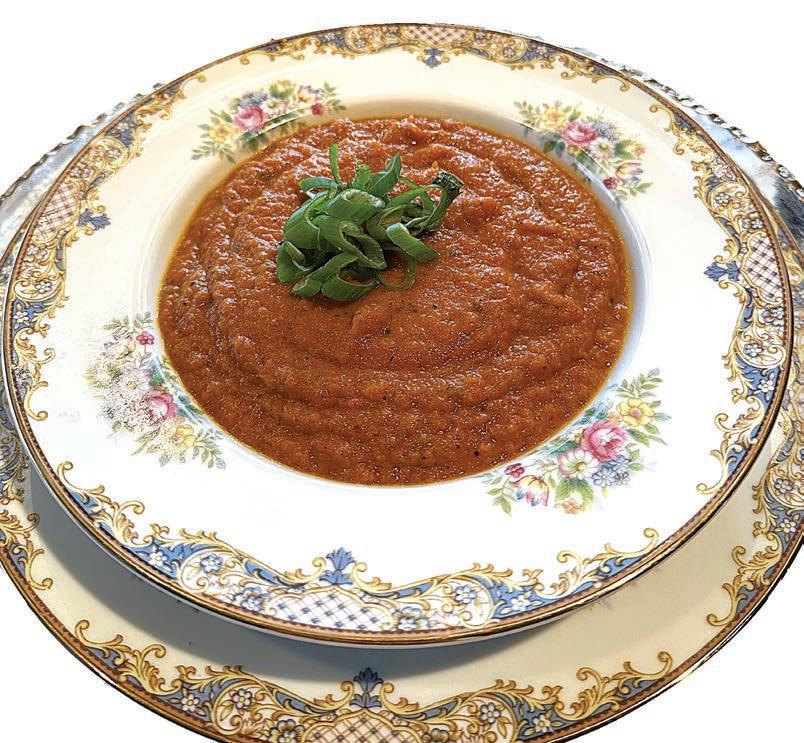

This action-packed story reimagines “Adventures of Huckleberry Finn” as it is told from the enslaved Jim’s point of view. When Jim overhears that he is about to be sold to a man in New Orleans and separated from his wife and daughter forever, he decides to hide on nearby Jackson Island until he can formulate a plan. Meanwhile, Huck Finn has faked his own death to escape his violent father. As fans of American literature know, thus begins the dangerous and transcendent journey by raft down the Mississippi River toward the elusive promise of the Free States and beyond. While preserving many narrative set pieces of “Adventures of Huckleberry Finn,” this book, “James,” focuses on Jim’s intelligence and compassion in a radically new way.
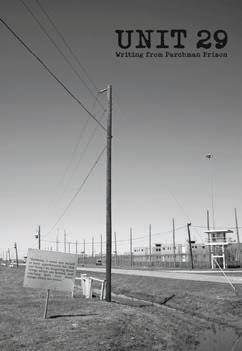
This collection of essays is compiled from more than 30 inmates housed at Mississippi State Penitentiary following a three-year series of writing workshops at Unit 29, which includes death row inmates. One author is Steven Wilbanks, a college student in 2013 when his attempted theft of a fellow student led to a fatal shooting and his lifetime conviction without parole. Wilbanks writes, “The scars that affect us the most can’t even be seen. They cut deep, down to the bone, and often break our hearts. The best thing I can do with all of these scars is to accept them for what they are: Proof that I am human.”

This book does a masterful job capturing the life story of Mississippi State sports icon Dudy Noble. Robertson unearthed intimate details about young Noble, who became the most decorated Bulldog student athlete, with an exceptional 14 varsity letters. Before being named athletic director, Noble made school history as the first baseball coach to secure three league titles. Now, each spring, a sea of baseball fans flock to Dudy Noble Field, a majestic college baseball cathedral. The atmosphere is electric, earning the stadium the endearing name “The Dude.” Readers discover more about the man after whom that sacred grass is named in “The Dude: The Life and Times of Dudy Noble.”
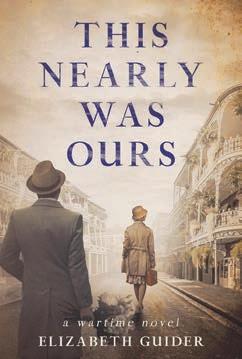
THIS NEARLY WAS OURS BY ELIZABETH GUIDER
This gripping World War II saga is about two friends in the Deep South whose fates are at the unforgiving mercy of the war. As Claire and Myra are coming of age in New Orleans, Pearl Harbor jolts the country. Men rush to enlist, women flood to the work force and the two friends scramble to find purpose, landing jobs at a military camp and Naval Intelligence. While war rages abroad, the home front becomes its own battleground. Claire falls for a mysterious young man eventually fingered as an enemy alien. Myra carries a torch for an officer commanding a carrier in the Pacific. Through the men’s letters from afar and their own challenges at home, the two friends — and readers of “This Nearly Was Ours” — learn how baffling and brutal war can be.
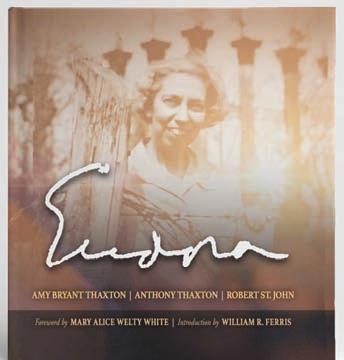
EUDORA BY ANTHONY AND AMY BRYANT THAXTON AND ROBERT ST. JOHN
Mississippi’s unsurpassed literary legacy is honored in this book about beloved Pulitzer Prize-winning author Eudora Welty. The renowned short story writer is explored through intimate and charming interviews, both with Eudora herself and with family and friends. The book is a revealing portrait of adventure, daring, humor and love as we meet a writer we only thought we knew. Scholars, teachers, and aspiring writers have studied Welty’s work for more than half a century. While her books have been published in 42 languages, Mississippi readers uniquely relate to the intimate memories in” Eudora,” a treasure for anyone who loves writing and writers.
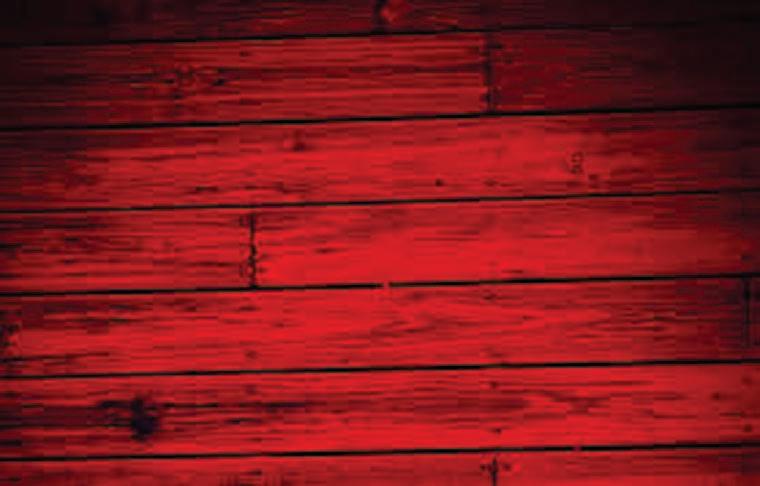





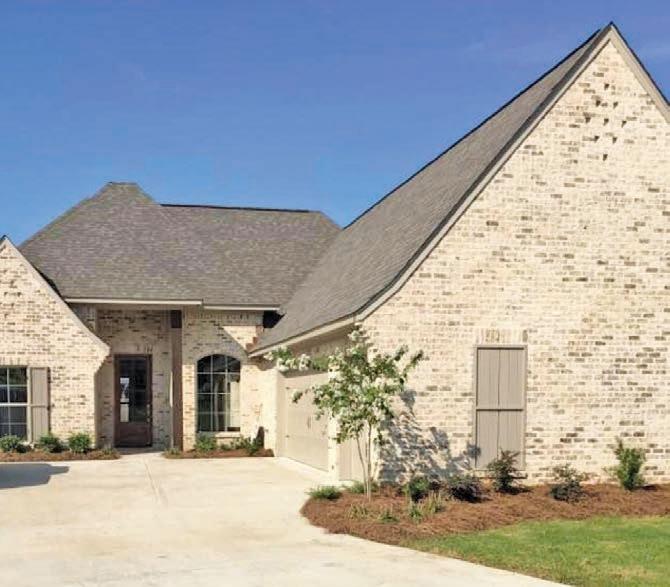













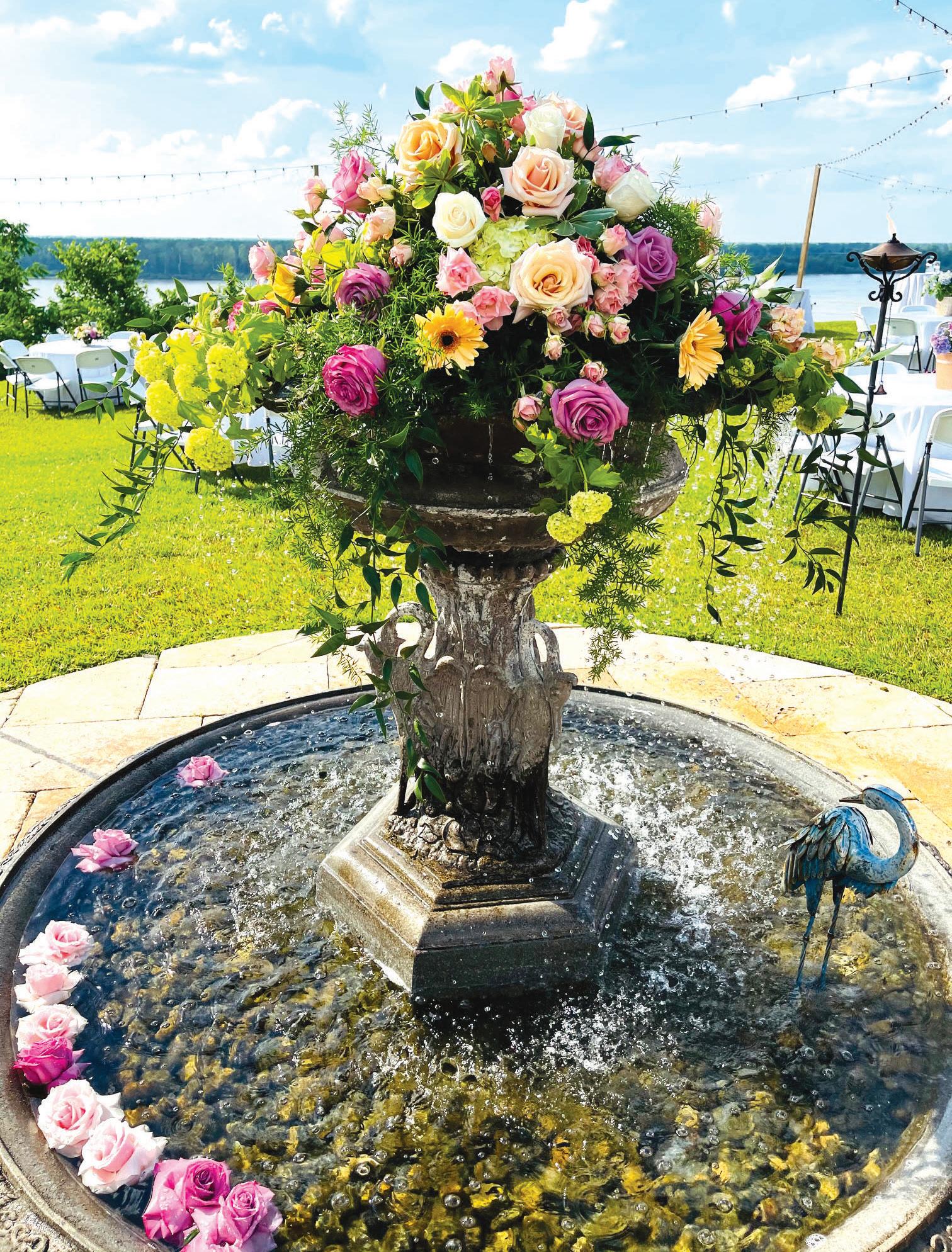
With the weather changing and becoming warmer outside, as well as flowers starting to bloom, now is a perfect time to give your home a little makeover with some spring décor.
MK designs owner Mary Kaylin Gray said it doesn’t have to be elaborate.
“For minimalist design you can feature simple greenery with subtle floral accents,” she said. But for those wanting to go big,

MARY KAYLIN GRAY
Gray suggests embracing vibrant and colorful blooms with elaborate arrangements. When decorating for spring, Gray said she likes to use bright, flowery shades of pastels to bring the outdoors inside.
Bunnies can add a fun touch to spring decorating, Gray said. You can
even leave them out as part of your spring décor.
But if they are “overly Easter-ish,” Gray said, after the holiday it will be time to put them away along with baskets and pastel-colored eggs.
Decorating entrances can also make your home a hoppy place.
“Faux flowers are a great way to create that warm welcoming feeling to your front door,” she said. “And of course, nothing says spring like a fresh bouquet for that special event for your table.”

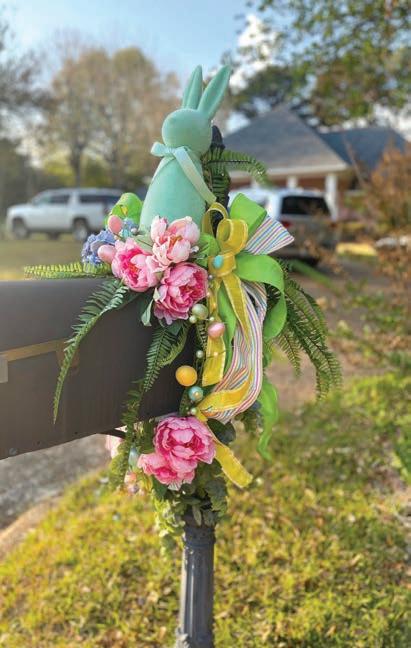




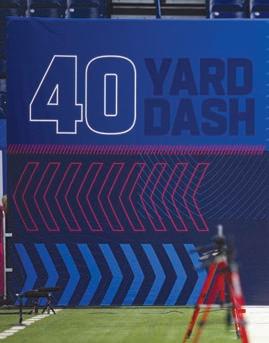

VICKSBURG’S EVAN FARRELL MAKING HIS NAME IN SPORTS PHOTOGRAPHY




Evan Farrell believes in taking shots.
Lots of shots.
And on Jan. 20, he maneuvered all over Mercedes-Benz Stadium in Atlanta as one of 20 media interns selected nationwide by the College Football Playoff to cover the National Championship Game with his photography.
Evan, a 17-year-old Vicksburg native and the son of Matt and Alley Farrell, is a 2024 fall-semester graduate of Warren Central High School. He started classes at Ole Miss in January as a journalism major, which was only part of a busy month.
As part of the CFP’s intern program, he put in a week full of long days leading up to the event and worked nearly 24 hours straight the day of the game.
“It was a busy week, man. We were waking up at 5 a.m. and had our first meeting at 6. We were going to all the events the CFP put on. We were getting done at 2 in the morning,” Evan said. “By the time we got to the championship game the whole team was exhausted. But it just made all the work we put in that week so much better. It’s a phenomenal experience.”
Having been a student at Vicksburg Catholic School, Evan’s journey into the world of sports photography began after he transferred to the Vicksburg Warren School District and was working on making new friends.
COVID in the spring of 2020 made remote learning the rule and hampered his ability to meet classmates. So he approached his freshman year at Warren Central with redoubled efforts to make new friends by joining the golf team and, while taking a media class, claimed “I can take photos” — despite having never before touched a
professional grade camera.
This resulted in a media pass for the Warren Central-Brandon football game, where, with his mom’s Nikon D-3000 and a zoom lens, he covered the game, then posted the images to TikTok to “see what would happen.”
What happened was three million “views” and 700,000 “likes.”
He took that as a sign. After similar reaction to posted photos of the remaining games, he acquired his own camera and lenses.
In February 2023, Evan decided to shoot an Ole Miss-LSU basketball game. Without press credentials or connections, he spirited his camera into the arena wrapped in pom-poms, with a cover story of being a high school sports photographer (true) doing a follow-up shoot of a student now playing for Ole Miss (mostly true).
He was allowed access, shooting from the court ends, and meeting staff and professional photographers. This started his relationship with Ole Miss Athletics.
“Those photos put me on the map as a sports photographer,” Evan recalls.
In the fall of 2023, Evan was credentialed for three Ole Miss football games, furthering his relationship with Ole Miss student athletes. They started following him on social media, posting and sharing his work.
In January, he was hired as an intern with Ole Miss’ athletics department to shoot photos of the university’s sports events.
“I’ll be covering every sport now, which is fun. It’s the job I’ve been dreaming about for the past two years,” Farrell said. “It’s really cool that that’s coming to fruition.”
While shooting photos was satisfying, Evan wanted to explore other options and began studying ESPN and NFL sports documentaries.
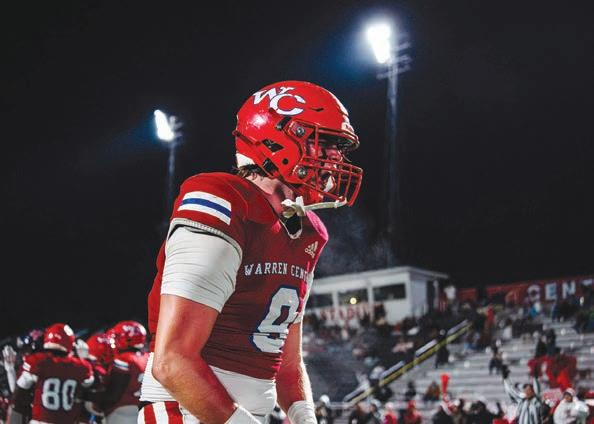




With his own documentary in mind, he started filming Warren Central football, advancing his skills as the season progressed, learning how to set his camera, where to be on the field and what moments needed to be captured.
The result was more than 500 hours of video, plus follow-up of player interviews. The film editing process required gathering and sorting his image files, plus game films, interviews, and radio broadcast audio, all loaded onto his work station’s 20-terabyte hard drive and edited with movie-making software.
Matching a particular play’s image files with corresponding broadcast audio and player interviews was extremely tedious and time consuming. For three months in the spring of 2024 Evan edited his film, often into the wee hours of the morning — all while in school and on the golf team.
“I had set a deadline of May 21 for the presentation, but I had more games to edit. It was a panic, but we got it done,” Farrell said.
His film, titled “11 Brothers: The Movie,” is a celebration of Warren Central football. It premiered with great fanfare on the school stadium’s giant video screen to an audience of around 500, with coverage by WLBT-TV and The Vicksburg Post.
“I was hoping the scope of this would inspire the next generation of high school students to be creators,” Farrell said. “And now, there may be eight kids on the sidelines photographing, so that’s good.”
In the fall of 2024, Evan photographed three Ole Miss home football games. Eyeing the road game at Death Valley in Baton Rouge, he applied to LSU for credentials and was shocked to have been approved.
“It was all the big names in sports photography, like the AP, Getty Images. And me. I think they accidentally confused the process and I got my credentials before they realized it was a mistake,” Farrell said. “I had a great time. The fans rushed the field! Friends told me later, ‘But Ole Miss lost.’ Hey! I got to go to a night game at Death Valley and photograph it. Nothing could be better!”
Last year, as the Ole Miss vs. Georgia game was approaching, Evan wanted to shoot it.
“MSScoreboard, a sports media company
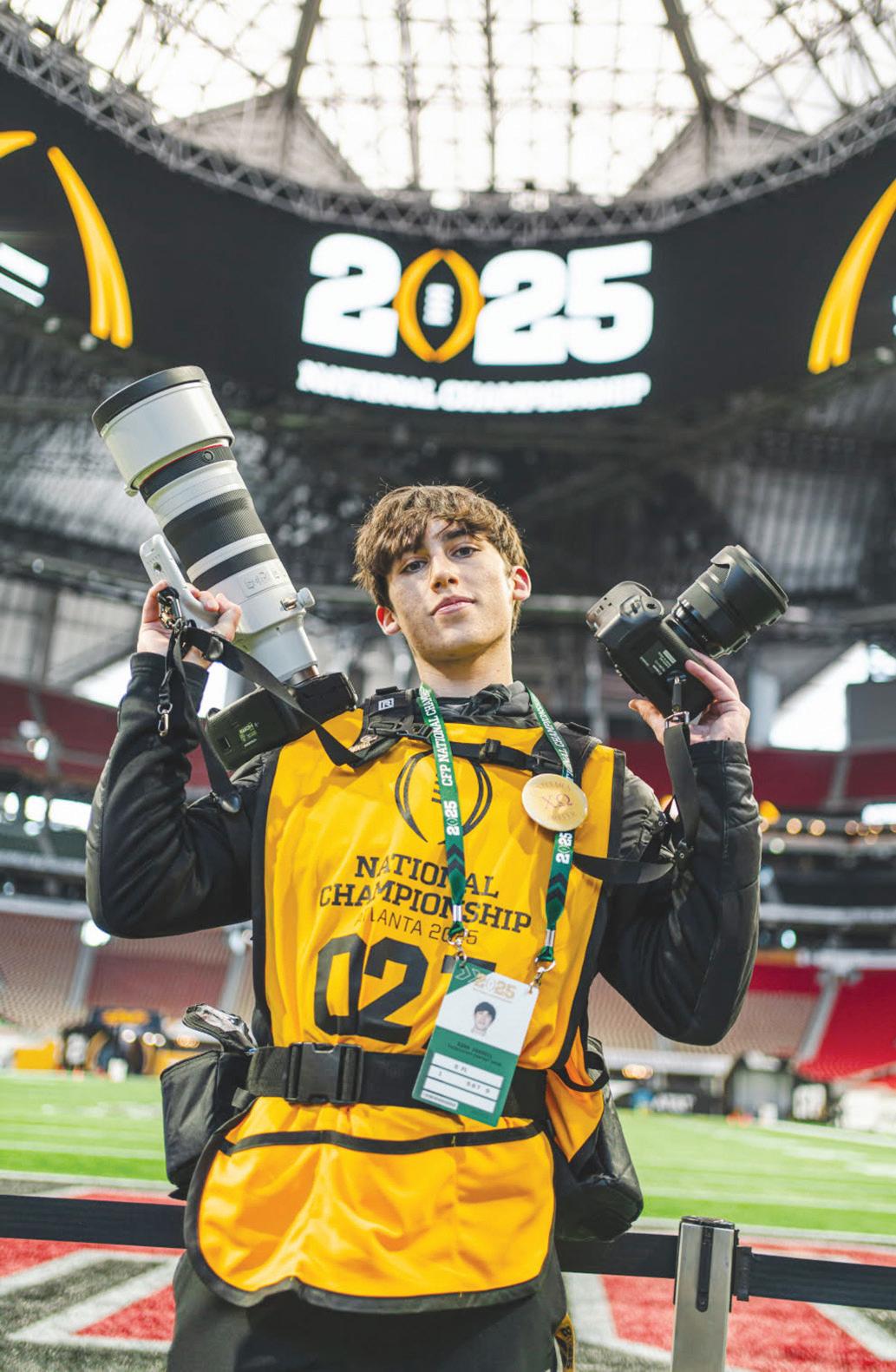
based in Jackson, had reached out to me to do some freelance work,” Farrell said. “I offered to shoot the Georgia game for them, and because one of them had a conflict, I got credentialed.”
He wound up in the middle of another chaotic scene when No. 16 Ole Miss beat No. 3 Georgia 28-10 and fans rushed the field again.
“It was amazing. I learned what not to do when a field gets stormed!” Farrell said. “I headed to the center of the field for the coaches’ handshake. Big mistake. It was like a mosh pit, it was raining, it was a mess, and I was stuck.”
That game started Evan’s relationship with
MSScoreboard, for whom he’s covered other statewide sports events such as the MAIS football state championship — again, all while a student at Warren Central.
Wanting to advance further, Farrell made a pitch to NFL teams for credentials but his age (as a minor at 17), and likely a bit of league bureaucracy resulted in rejections. While licking his wounds from that, he had a surprise call from the College Football Playoff people saying that they admired his work from his effective online presence.
Farrell was invited to cover the national
championship game in Atlanta as part of a select group of 20 young photographers, writers, graphic designers and videographers from across the United States.
“It’s an honor not only to represent Vicksburg, but pretty much the state of Mississippi, at such an awesome event,” Farell said.
He’s likely one of the youngest ever included in the group of 20, and his work at that game is opening other doors for him. In addition to getting the student internship at Ole Miss, he was invited to shoot the NFL Scouting Combine in Indianapolis from Feb. 27 to March 2.
“It’s my foot in the door, which is the hardest part about the NFL. It’s so strict. The fact I’m even getting to do this is such an honor,” Farrell said.
To prepare for the 2025 national championship game, Evan studied plans and models of Atlanta’s Mercedes-Benz Stadium to determine vantage points and routes. Unlike college games where photographers have designated areas, he had access to almost the entire stadium.
His goal was to shoot photos from the roof, but he was not allowed to for safety reasons. Instead, he maneuvered around the stadium finding different angles and photos.
Farrell said the interns rotated to different positions during the game. He assisted others during the first quarter, shot photos of fans in the second, and then was on the field for the third and fourth.
quarter from the concourse capturing different angles,” he said. “It’s not something many photographers get to capture, so I got to see some fan celebrations, some unique angles of plays developing, and then once the game begins it’s as grand as you think it is. It was really special.”
The game was the highlight of a very long, very busy day and week for Farrell and his fellow interns. The CFP championship game was preceded by a number of events around Atlanta that they were tasked with photographing. On Jan. 20, the day of the game, he started work around 10 a.m. and didn’t finish until the wee hours of the morning on Jan. 21. Adrenaline, he said, carried him through.
“My main goal was to go on the roof, but they shot that idea down. For the national anthem I went up to the very top of the 300 level, which was as high as we could go, and got a huge wide shot of the American flag on the field. Then I shot the second

“The actual night of the national championship, it was like Christmas Eve for us. We were so excited,” Farrell said. “I didn’t go to bed until 4 in the morning and then woke up at 5, got to the stadium around 10, and then I had to go shoot some stuff outside in the freezing cold. It was 19 degrees and I had to stand out there for five hours and shoot a concert for the pregame. We don’t leave the stadium until probably 3:30 in the morning. It’s a long day.”

Now that he’s started classes at Ole Miss and got his foot in the door with the university’s sports photography program, Evan hopes his body of work will soon get him access to venues where he can work to his full potential. He will also keep shooting for MSScoreboard covering college and high school games in north Mississippi.
And his unrealized NFL goal?
“Mark my words: 2025 is my year to shoot a professional football game,” he said. “I don’t know how to get credentialed yet. I’m stubborn. I’ll figure out a way.”


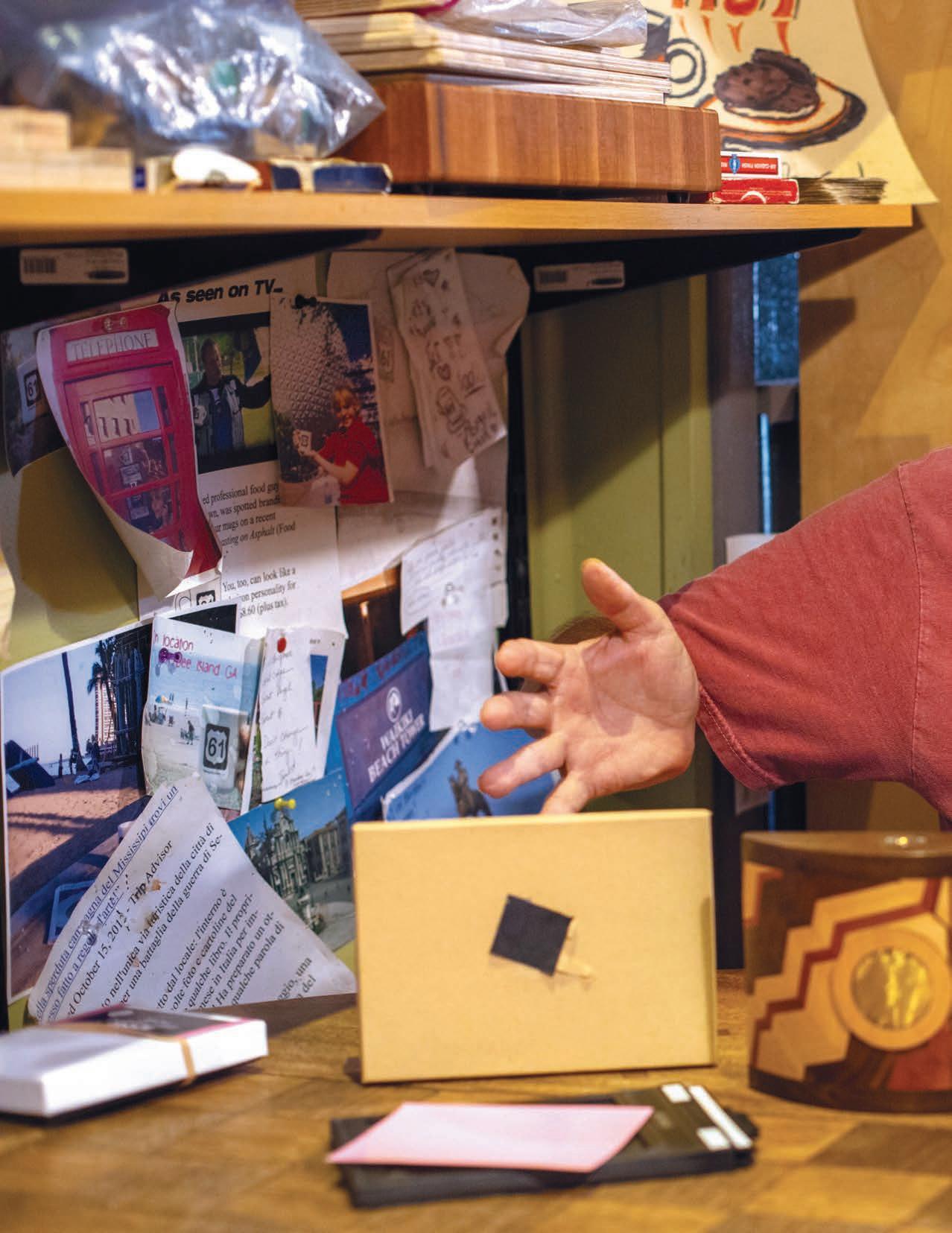

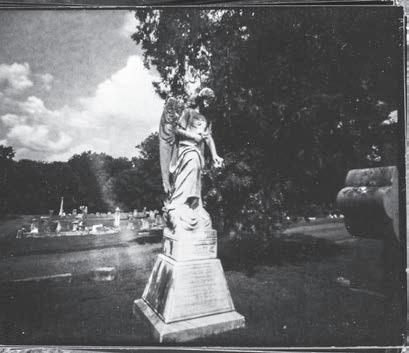

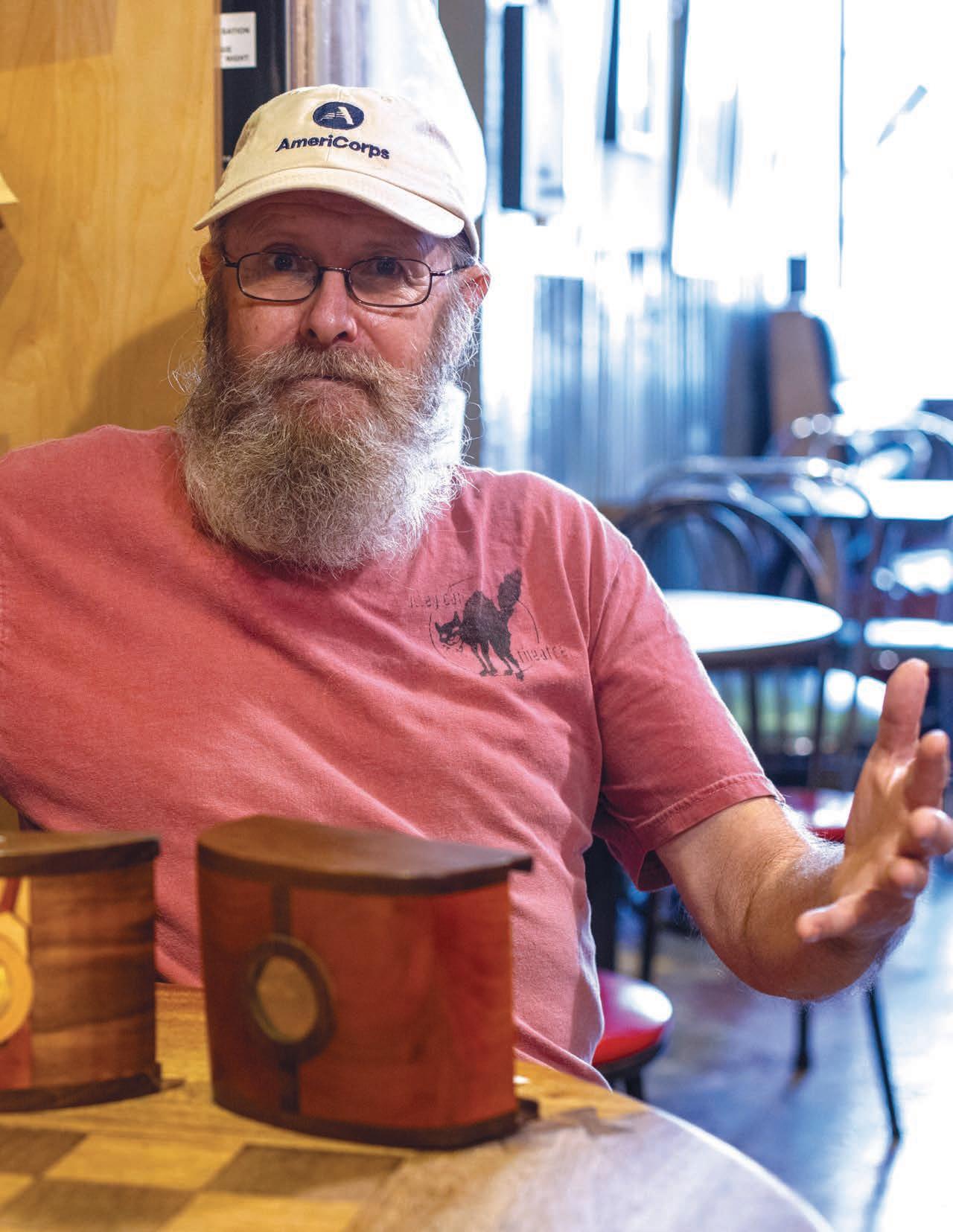

Photography is something people tend to take for granted today. It’s easier and more accessible than ever thanks to smartphones. We have in our pocket at all times a camera that can capture images that in most ways exceed the quality of your average 35 mm film camera from 25 years ago. Low light situations no longer require a blinding flash, and best of all you don’t pay per shot.
One Vicksburg resident, Jack Burns, has gone back to basics with his foray into pinhole photography.
“Well, I was on YouTube, and you know how it is. Sometimes the algorithm puts stuff out there, and for whatever reason, I came across a YouTube video about a guy who had made a pinhole camera,” Burns said. “But it was quite big, and it was made with bellows and, you know, like, reminiscent of the early days of photography in the 1800s.”
“These kinds of things, from a woodworking standpoint, can be as challenging as you want to make them or as simple as you want to make them. Because, I mean, this literally could just be a simple box, you know?”
— Jack Burns
A pinhole camera is as rudimentary as a device can be while still being called a camera. They can come in many forms, but
all feature a light-proof chamber, a small hole in that chamber that acts as a lens, and an area inside the chamber that can hold a photosensitive material.
Imagine a completely dark room. One wall has a small hole in it, say half a centimeter across. Through the hole, one can see a tree on a sunny day. On the opposite wall, there will be an upside-down projection of the tree. This natural phenomenon has been recorded since ancient times.
The first photograph was notable not for the projection of an image onto a surface, but rather the invention of the chemical processes that allowed that projection to be permanently recorded onto the surface. Today this is typically done with a digital sensor, film, or photosensitive paper.
In Burns’s case, the photosensitive material is direct-positive photo paper processed in a dark room.
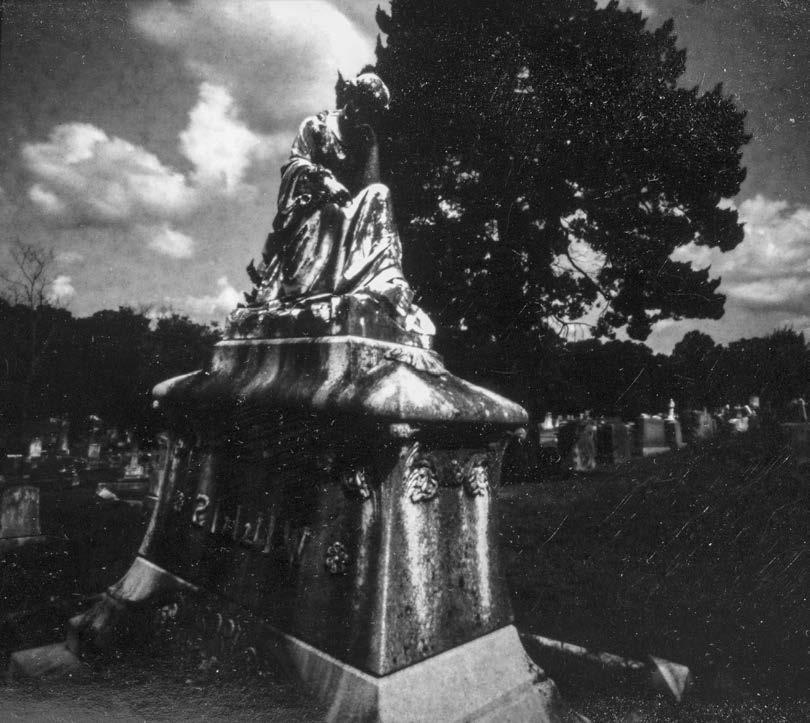

Burns is a maker. He is head of the theatrical productions for the Westside Theatre Foundation at the Strand Theatre in downtown Vicksburg. From set pieces to costumes to special effects, Burns can often be found getting his hands dirty with artistic DIY projects.
“I had access to information, but still, to physically get in there with your hands and do it, I was having to learn from scratch and learn about darkroom developing and all this, which I know I’ve only scratched the surface of,” he said.
To date, Burns has made about 10 pinhole cameras of varying complexity.
“These kinds of things, from a woodworking standpoint, can be as challenging as you want to make them or as simple as you want to make them,” he said. “Because, I mean, this literally could just be a simple box, you know?”
While his simplest pinhole camera is a cardboard box with photosensitive paper taped to the inside, Burns has also been making more sophisticated versions of the cameras. One is a wooden box made of different wood species to create a mosaic. This camera also has a slot where a standard 5x7 large format film holder can be placed to hold the paper, streamlining the process.
One important aspect of pinhole photography is the required long exposure times. While a modern camera exposes an image in a small fraction of a second, the limited amount of light that makes its way through the tiny pinhole means that a pinhole camera needs significantly more time to make a proper exposure.
“I’ve had pretty good luck with a one-minute exposure time,” Burns said. “And if it’s overcast, then that could be two minutes for a lighter-colored surface and maybe three
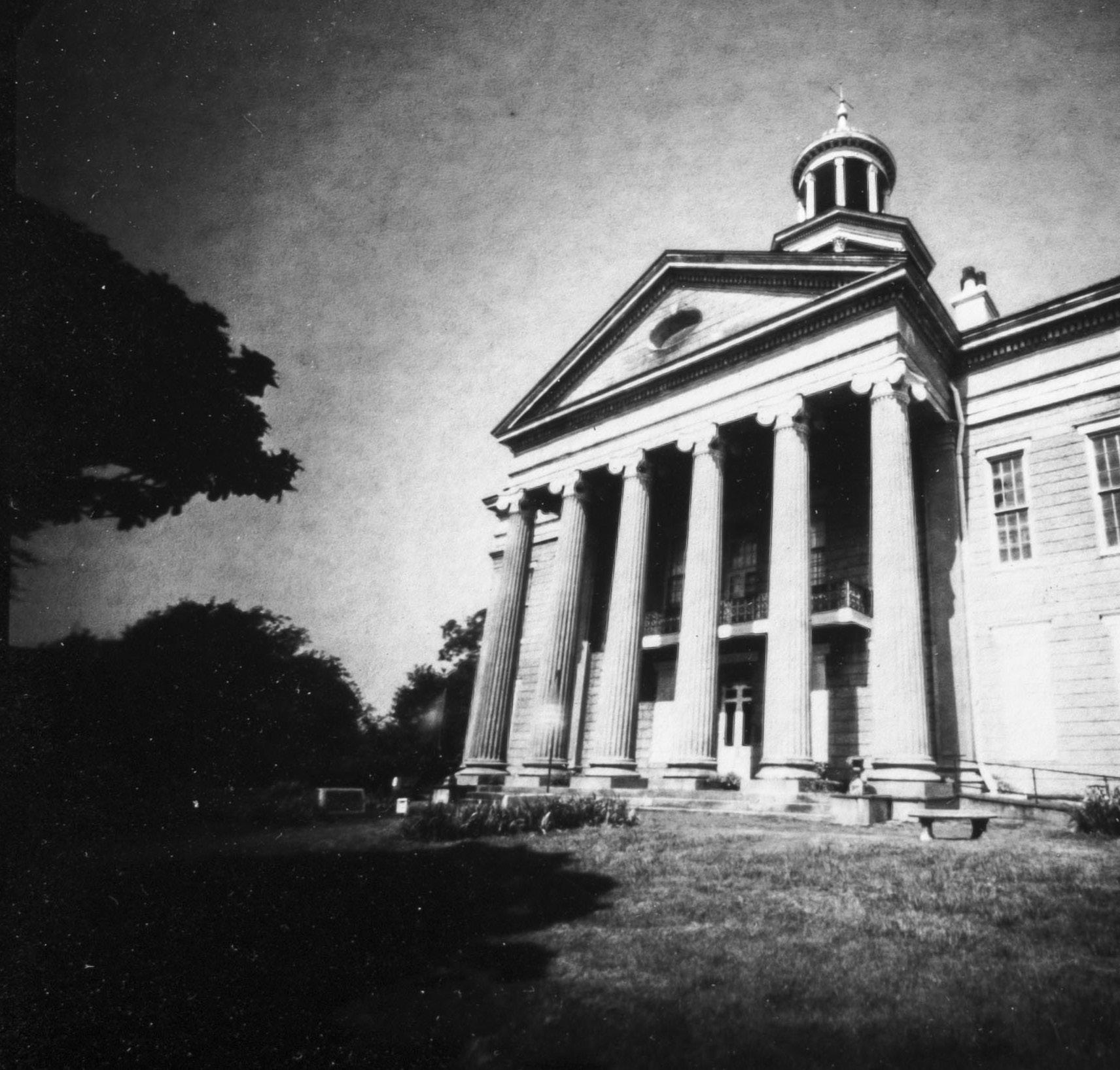
minutes for a darker-colored surface.”
The long exposure time also affects what subjects are appropriate for pinhole photography. A person, even one attempting to, can hardly stay perfectly still for 40 seconds. For this reason, Burns has focused on architecture and landscapes.
“I’ve taken pictures of city hall. I’ve taken pictures of a couple of churches downtown,” he said. “I’ve taken pictures of museums down here. I’ve taken pictures
of some interesting houses on Drummond Street.”
The process also takes a fair amount of trial and error.
“There are no viewfinders, so you don’t really know (how it will turn out). There’s quite a few elements of chance in what the outcome might be because there are a lot of variables,” he said. “A more experienced practitioner could probably cut down the number of variables, but that’s not me yet.”
Film photography is a niche market these days, but has seen a resurgence in recent years.
Ironically, a person from 50 years ago might view a modern digital camera as something of a magic trick. Today, the alchemy of revealing an image in a darkroom strikes many film enthusiasts with that same feeling of wonder.
“I’m a guy who likes to see results right away, and this is not that. You really have
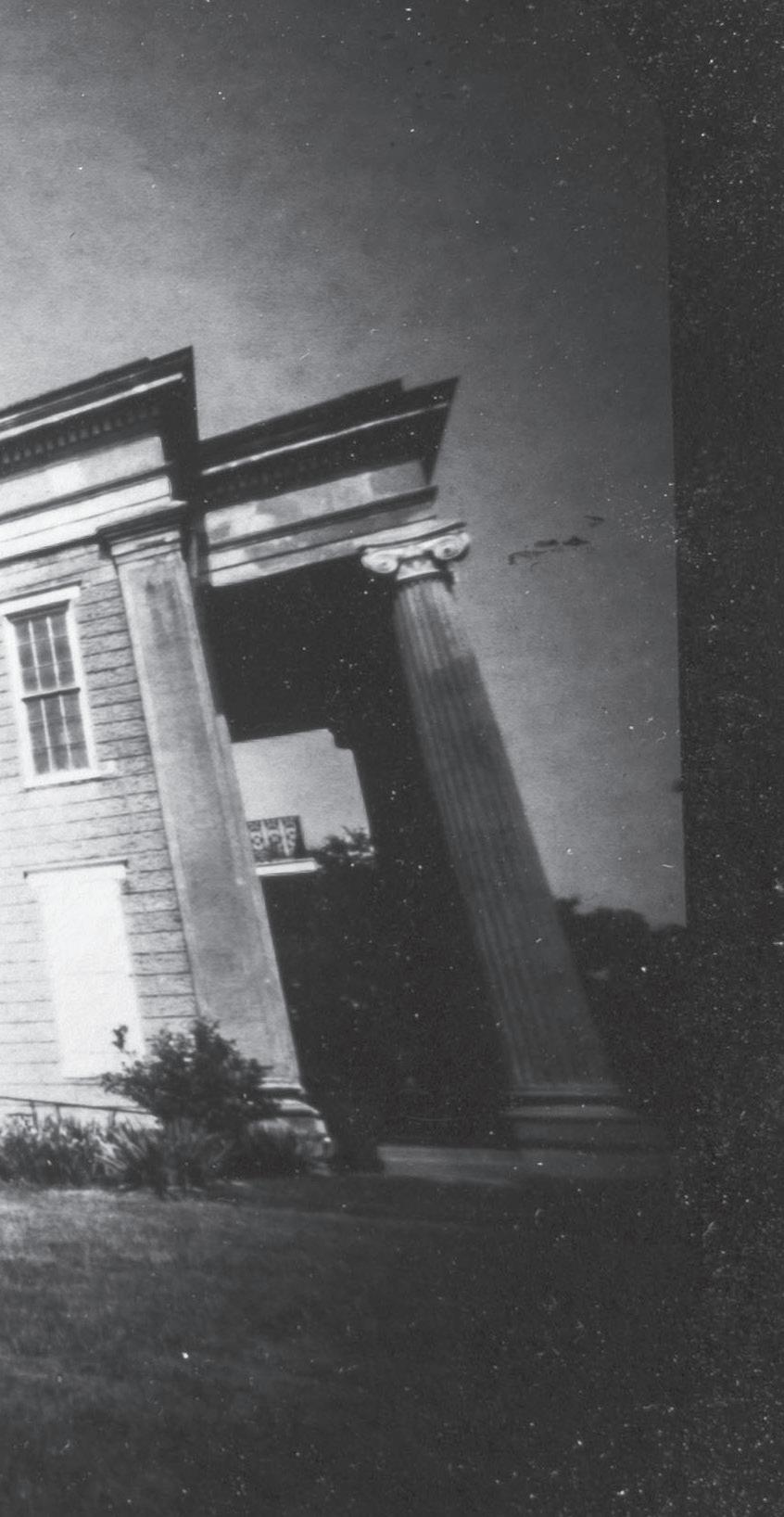
to put yourself in a whole different, for me anyway, a whole different headspace than just snapping a shot and snapping another one and then flipping through to see how they look,” Burns said. “It’s like walking versus driving a car, everything slows down.”
Recently, Burns won an award for his photography at the annual
Vicksburg Art Association Fall Show.
“I’ve really had fun doing this,” he said. “Sometimes you just stumble across something that ends up becoming a lifelong obsession. I need a lifelong interest. Although in my case, it is a bit of an obsession because no one needs 10 pinhole cameras, but, you know. Whatever.”













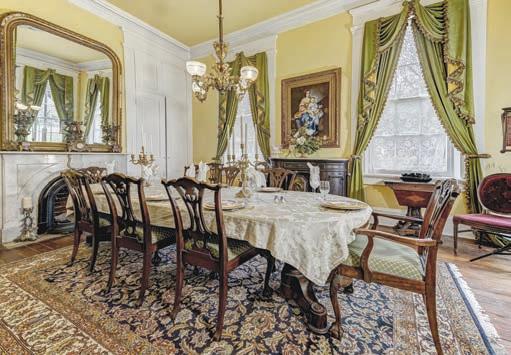
When Kendra and Dr. Steven Reed partnered with Harley Caldwell to purchase and restore Cedar Grove mansion, it was all about saving the “crown jewel of Vicksburg.” Recently, the Reeds bought out Caldwell and are forging ahead on their own.
“The reason we call it the ‘crown jewel of Vicksburg’ is because not only is it one of the biggest homes in Vicksburg that survived the war, but also because John Klein was a jeweler. Back then, jewelers made glasses, so that was particularly fun for me,” Kendra said.
Dr. Steven Reed is an eye doctor, and Kendra worked for many years in pharmaceutical management for a major optical manufacturer.
Kendra, who now manages the home, said she had never managed a restaurant or tour home before and really didn’t have any idea about the enormity of the project she was taking on.
“I just wanted to save Cedar Grove,” she said.
As she enters her third year of ownership of the mansion, Kendra has come to appreciate its history as well as the effort involved in restoring such an old place.
The history of Cedar Grove began in 1840, when John Alexander Klein built the home for his bride, Elizabeth Bartley Day. At the time of their wedding he was 30 and she was just 16. While the mansion is now surrounded by a neighborhood and crossed by a railroad a few blocks away, back then it was forested, with rolling hills and a view all the way down to the Mississippi River.
Klein had arrived in Vicksburg four years earlier and began building his fortune as a jeweler, banker and landowner. After he married Elizabeth, the couple
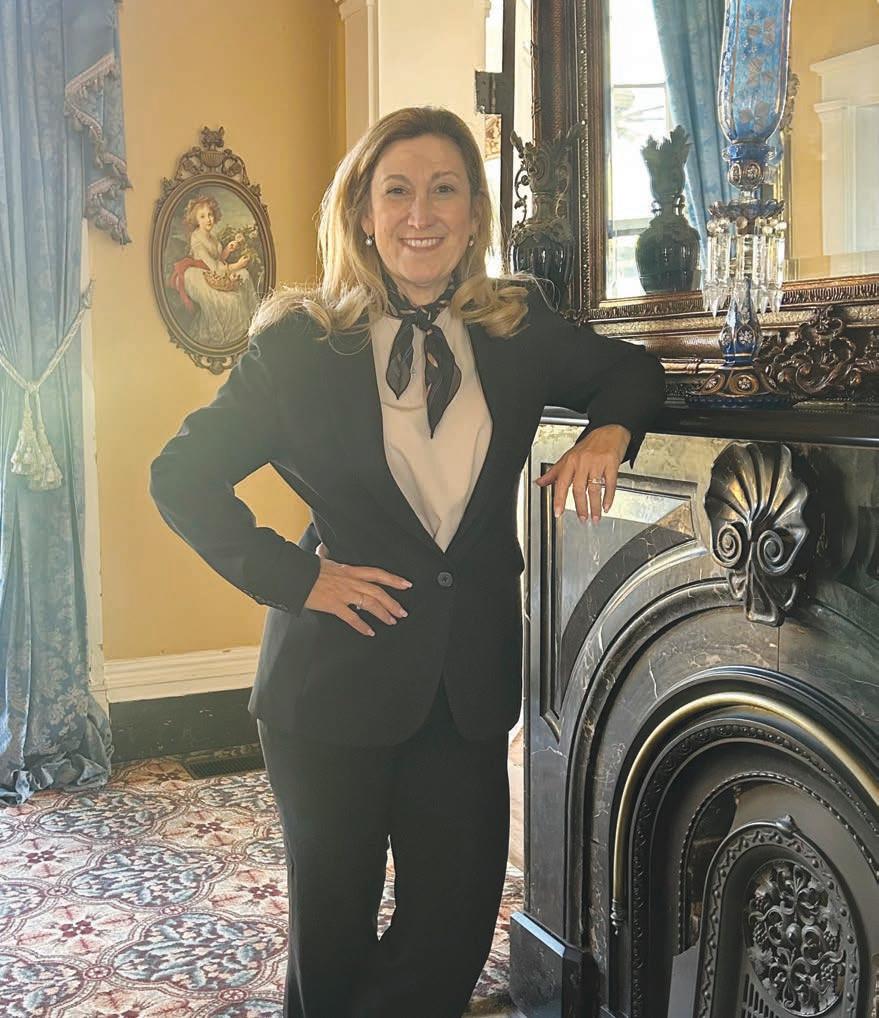
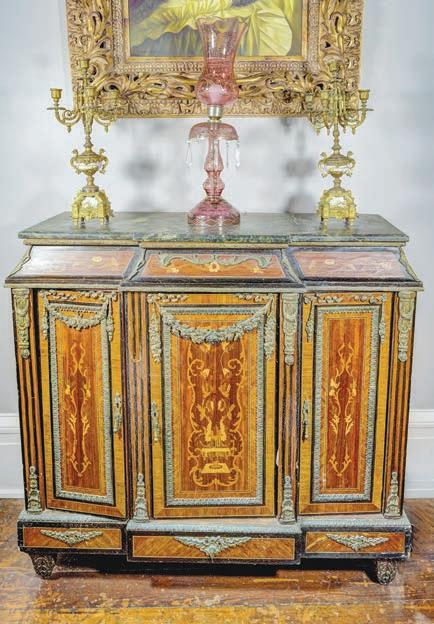
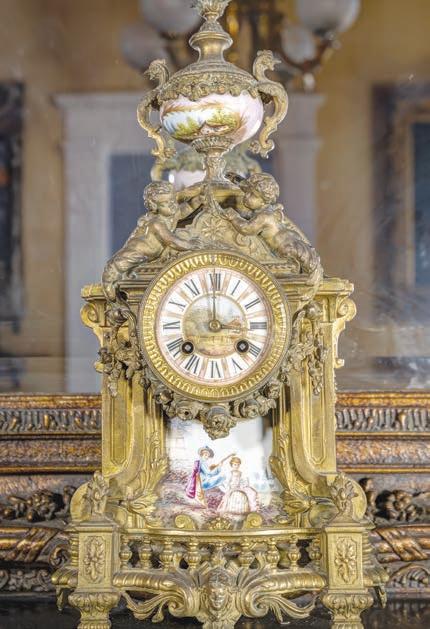


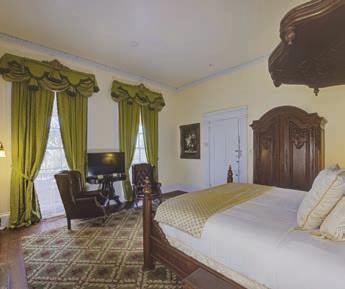
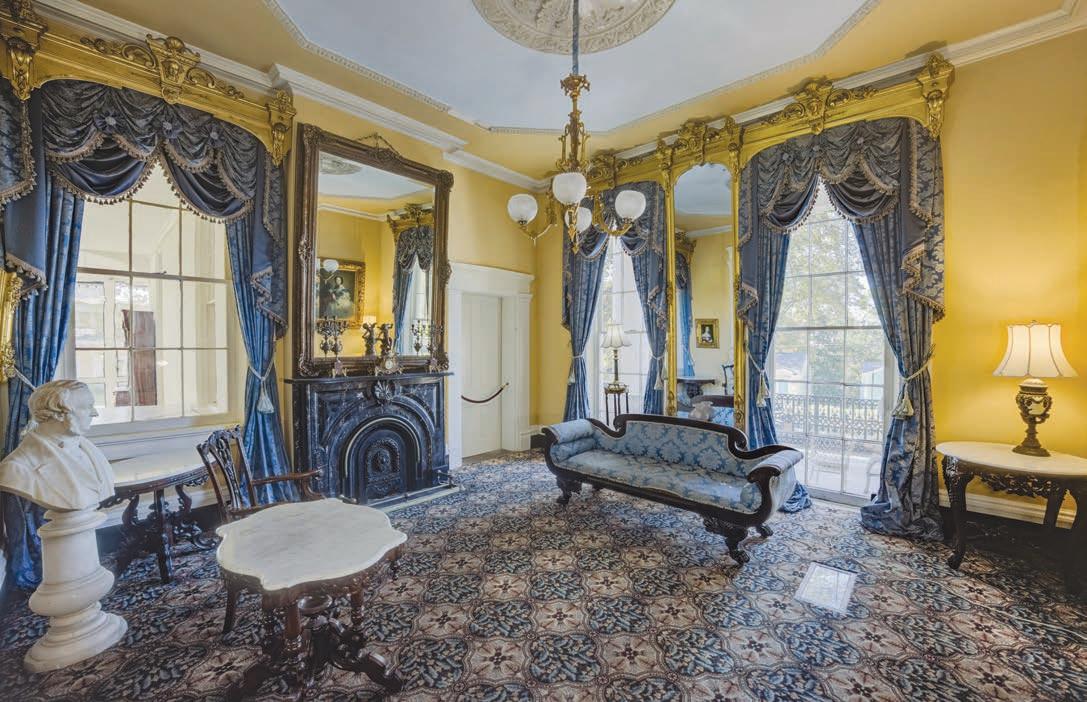
"The reason we call it the 'crown jewel of Vicksburg' is because not only is it one of the biggest homes in Vicksburg that survived the war, but also because John Klein was a jeweler. Back then, jewelers made glasses, so that was particularly fun for me."
— Kendra Reed
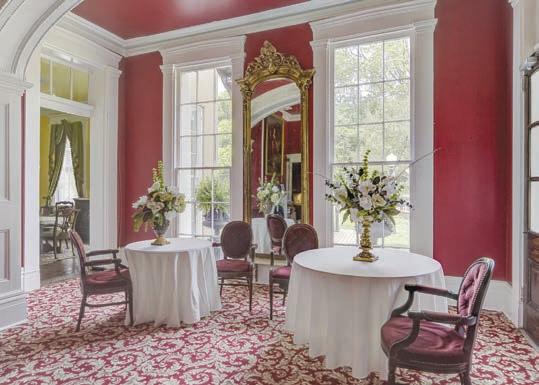
traveled to Europe and spent two years purchasing furnishings for the home. Some of the original furnishings remain in Cedar Grove today.
In 1852, an addition to the southern side of the home was built, adding a ballroom, portico and library with a basement underneath. Original books from John Klein’s collection still rest on the library shelves. Some time in the 1870s, an expansion on the northern side was added that currently serves as the restaurant.
The home might have been burned to the ground during the Civil War had Elizabeth not been related to a significant Union officer, William Tecumseh Sherman. They were cousins, Sherman’s sister having married Elizabeth’s maternal uncle. Elizabeth was seven months pregnant when the Siege of Vicksburg began in May 1863, and Sherman was able to get a pass for Elizabeth and her children to safely leave the city.
When the city surrendered to Union forces, Cedar Grove became a hospital for Union soldiers. Ulysses S. Grant spent at least one night in the main floor bedroom, now referred to as “The Grant Bedroom.” The basement became a makeshift morgue.
After the siege ended, Elizabeth gave birth to a son, whom she named William Tec umseh Sherman Klein. William died at the age of 16 from an accidental gunshot following a hunting trip with a friend. The Kleins lost three other children in infancy. Six survived to adulthood.
Before his death at age 71, John Klein built four mansions on the property for four of the children who had reached adulthood. Three still stand today — The Corners, Belle of the Bends and Floweree.
Elizabeth “Lizzie” Klein Davis, daughter of John and Elizabeth, told a story of Cedar Grove before her death, then referred to as “The Old Klein Home.” She wrote the story as she imagined it reflected through the mirrors, if they could talk, which have been standing in the home since it was built.
Lizzie wrote, “I have seen . . . the palatial residence of a wealthy Southern planter in the luxuriance of ‘befo’ the war days’ when extravagant lawn parties and glittering balls were given to introduce the Klein daughters . . . Surrounded by merry guests, champagne glasses clinked as raised, drained, toasts voiced, the glasses shattered according to the custom of those extravagant times.
“We have seen . . . the sixteen-year-old Elizabeth Bartley Day, as Mrs. John Alexander Klein,


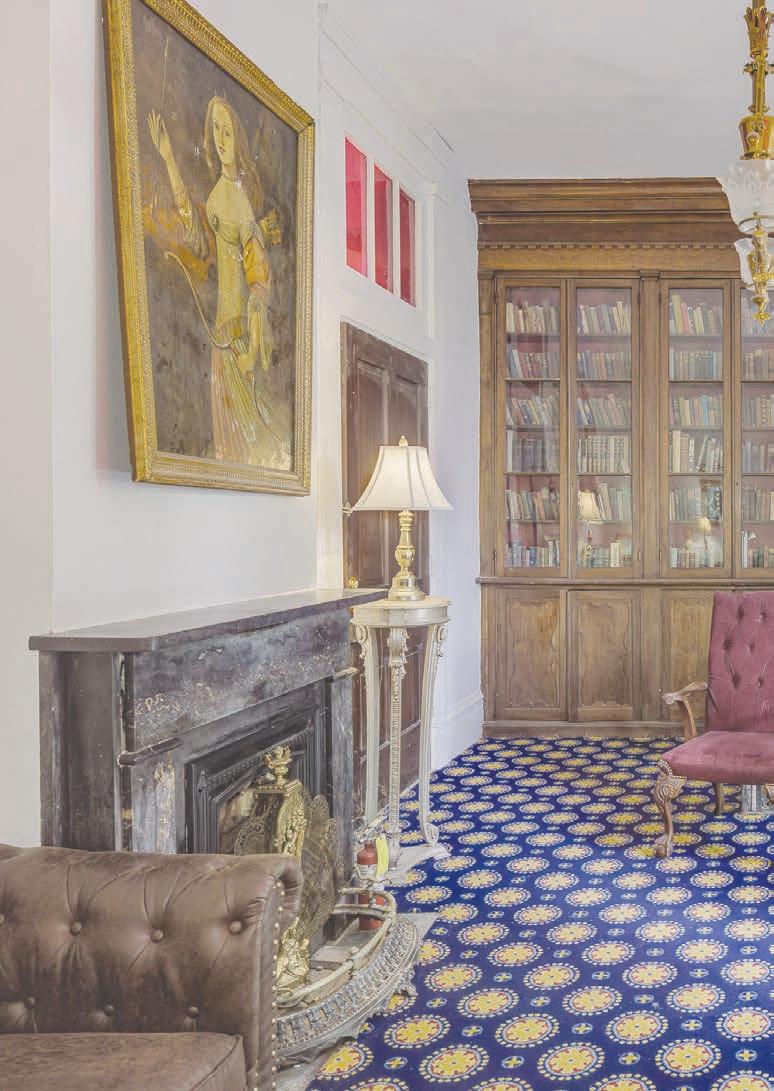


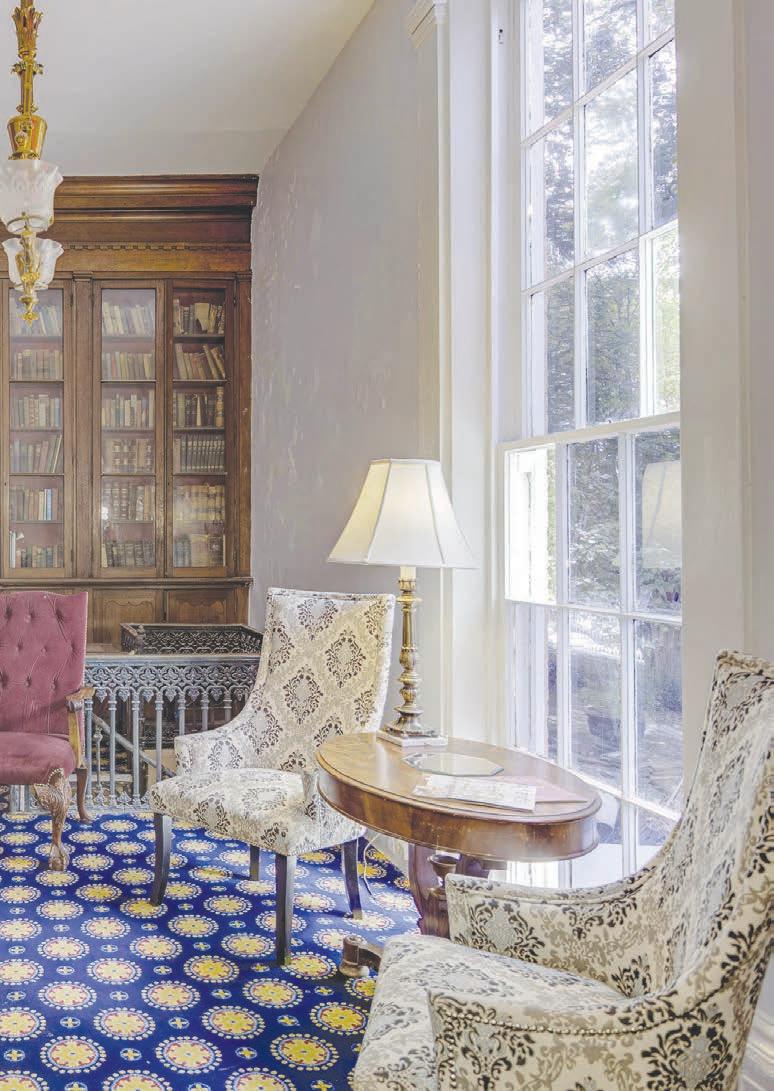
take her place as mistress of the great estate, which then extended to the banks of the river itself, where Cedar Grove had its own private landing called Kleinston. We watched that young bride develop into a gracious matron, dignified wife and mother of many sons and daughters. We’ve seen this young woman face war and its horrors, fleeing her home in the night to get her children to safety before the advancing Union forces entered Vicksburg. We’ve reflected the faces of the enemy as they occupied Cedar Grove as a Yankee Hospital for their sick and wounded . . . “
Lizzie continued, “At Cedar Grove, the broken panel in the front door where one of the first shots aimed at Vicksburg when the northern gunboats came up the river, shattered it, crossed the hall ... as it sped to a wall of the drawing room where it remains to this day, unexploded, more than one hundred years later, a silent witness of the war that entered the very portals of Cedar Grove.”
A trip to Cedar Grove today reveals those scars still plainly evident more than 160 years later. A patched hole in the top of the front door is visible, and the cannonball that Lizzie refers to remains embedded in the parlor wall. A hole in the floor of the front parlor caused by a cannonball has been preserved with a plexiglass cover. Visitors can observe the hole and peer through the glass into the opening below.
Cedar Grove remained in the Klein family for many years but was eventually sold. By the end of the 1950s it had fallen into disrepair and was being eyed for purchase as an oil storage depot. Determined not to let that happen, the Vicksburg Little Theatre Guild purchased the property in 1960 and began a restoration effort.
In December 1962, a fire nearly derailed their dream of restoring the house, but the Guild managed to push forward. Eventually, the Guild opened it as a tour home and place for its performances including the long-running “Gold in the Hills” production.
After many years under ownership of the Guild, it again became a private residence. In the 1980s it was purchased and became a tour home with a small hotel accommodation. A restaurant was added. Cedar Grove went on to be the place of many memorable events, from marriage proposals to anniversary celebrations and parties of all kinds.
Cedar Grove officially reopened on May 7, 2023. The date is significant because of two framed invitations that hang on the wall in the ballroom. Both are dated May 7, and are from the

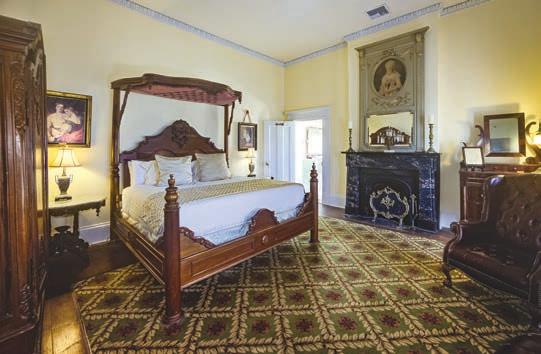
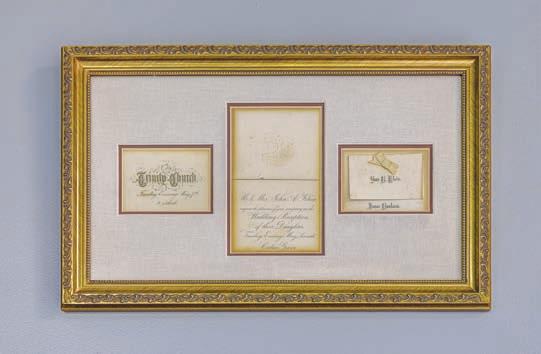
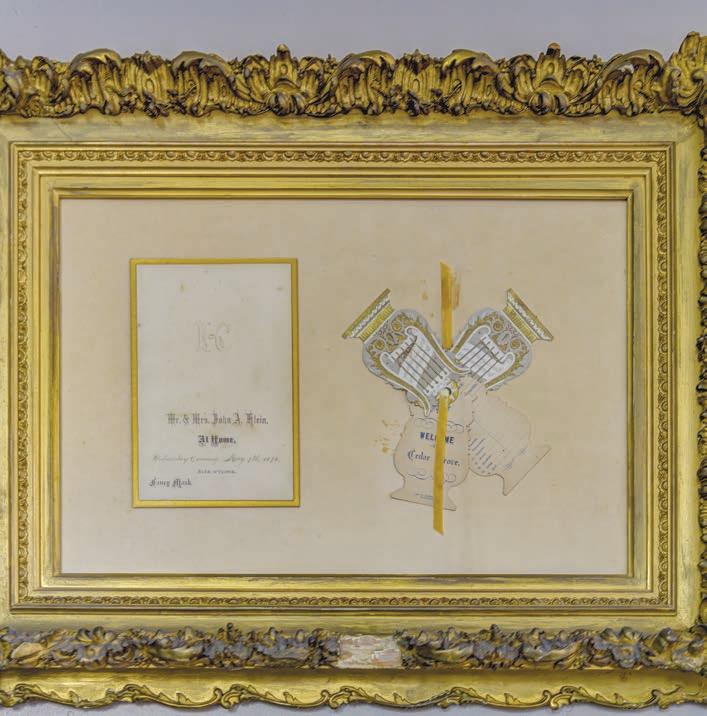
late 1800s. The first, which features a dance card and invitation to a dance is dated May 7, 1879. The second is a wedding invitation for the Kleins’ daughter, Susan Klein, also with a date of May 7. Kendra speculated that perhaps Susan met her future husband at the dance, and they married symbolically on the same date one year later.
Today the home sports upgrades such as newly renovated bathrooms in the guest rooms, electrical outlets with USB plugins and a refined bar and lounge area. The ballroom has been updated with neutral grays on the walls to accommodate weddings, bridal showers, baby showers or whatever celebration guests wish to have. Weekly Mahjong games have become a huge hit.
The dining room houses something special. What looks like an ornate sideboard that would be used to store silver and dishes is actually made of iron.
“John Klein had a secret,” Kendra said. “This is not a sideboard, but a safe.”
It hadn’t been opened in years, and Kendra was delighted to find, upon opening the safe, various items of silver serving ware.
“I don’t think they’re really old, but we were excited about it,” she said.
The original smokehouse is now part of the restaurant, referred to as “Chandelier Bar and Lounge.” The restaurant is open Tuesday through Saturday from 5 until 9 p.m. The executive chef, Chris, was trained in New Orleans. Kendra said, “anything you can’t pronounce, he can make!” Kendra is a Court of Master’s level 1 Sommelier and enjoys choosing wines for the restaurant.
The main house has 12 rooms for housing guests. A carriage house, which is not currently
open pending renovations, will provide more rooms. The pool house has two rooms. Kendra is currently in the process of converting the basement into a wine cellar. A greenhouse and goldfish pond are also in the plans for restoration.
When asked if she had a favorite room, Kendra said, “from a historical perspective, the Grant bedroom is cool.” Most of the furnishings in the room were there when Grant stayed in the room. “But I went all out in the honeymoon suite. I want my own bathroom to look like that!”
No antebellum home would be complete without a good haunting story. Stories abound of travelers having seen ghostly reflections in the mirrors, hearing children’s laughter and feeling cold touches at night.
Events are a big part of the ongoing activities at Cedar Grove.
“We just had a huge Elvis (wedding) vow renewal. Jack Curtis, an Elvis impersonator, came and led a mass vow renewal. He was funny,” Kendra said.
The next planned event is “Oscar Night” with a wine-pairing dinner.
“All the food is movie titles. We’re going to have ‘Fried Green Tomatoes at the Whistle Stop Cafe’ followed by ‘Ratatouille’ followed by ‘Silence of the Rack of Lamb’ and so on,” Kendra said.
An Italian night featuring Ferrari and Lamborghini cars parked on the lawn is planned for April.
“When our guests come in, they’re so happy that they get to live, even for one night, in this historic antebellum home. This is memorable. We have so many couples who say, ‘we got married here,’ ‘we celebrated our first anniversary here,’” Kendra said. “And I love that, because this house should be shared.”


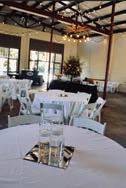
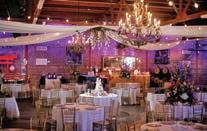
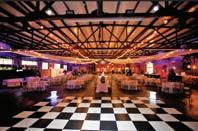



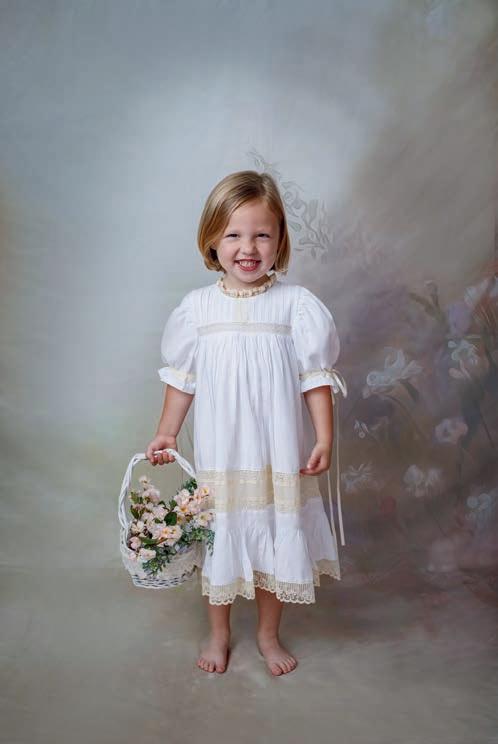

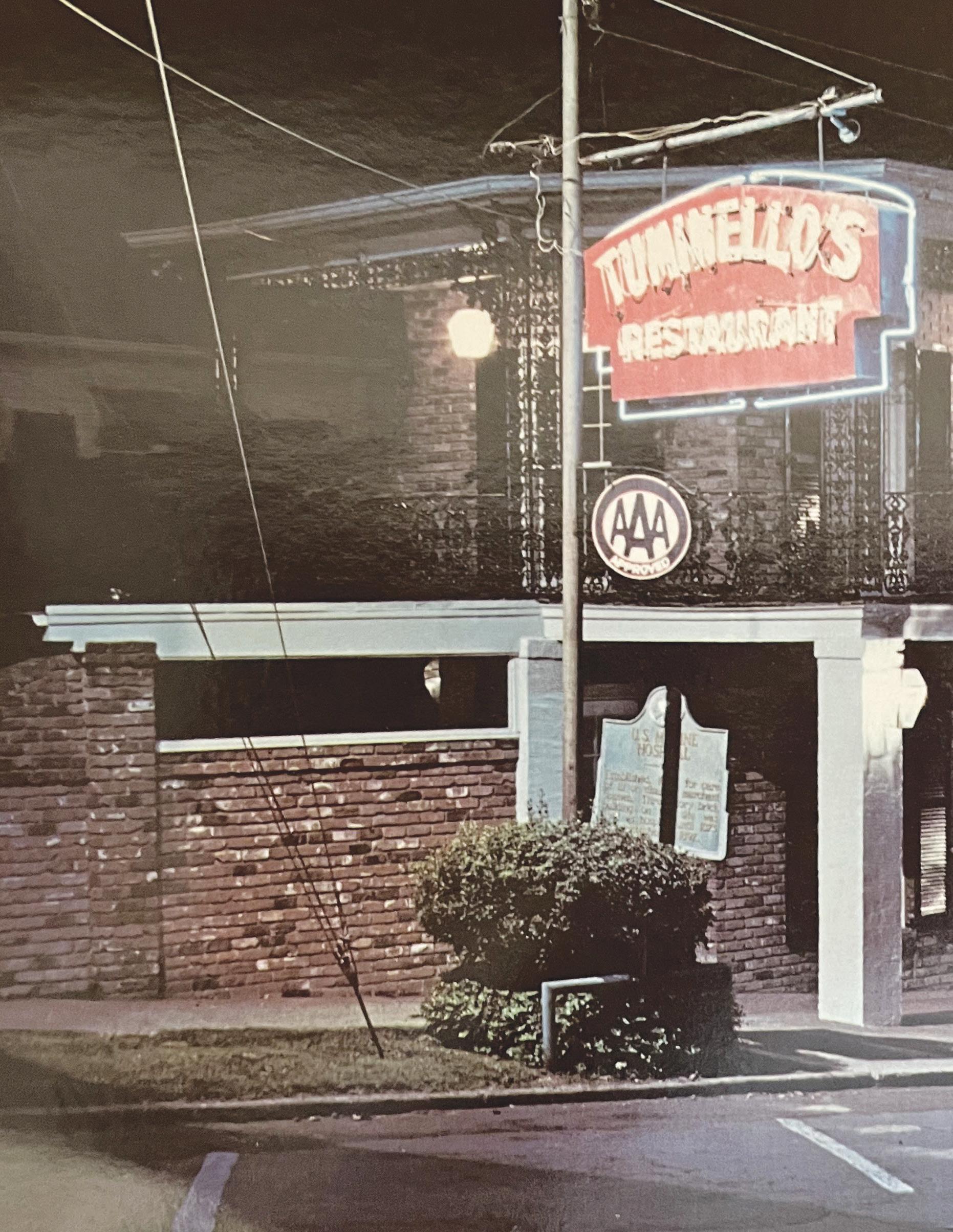
SUBMITTED
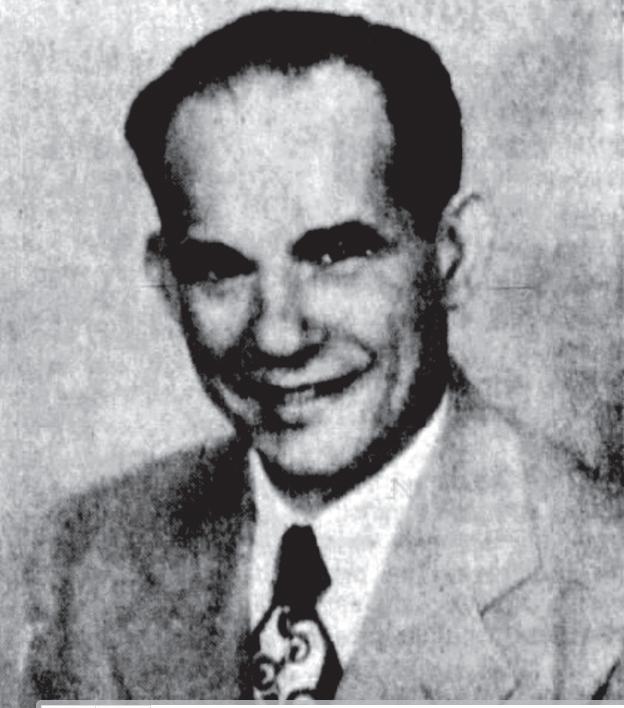
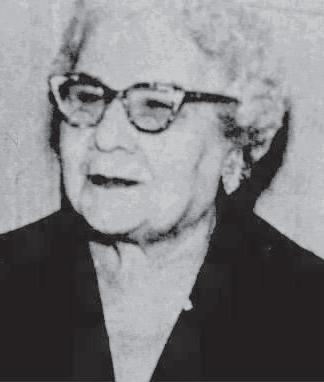


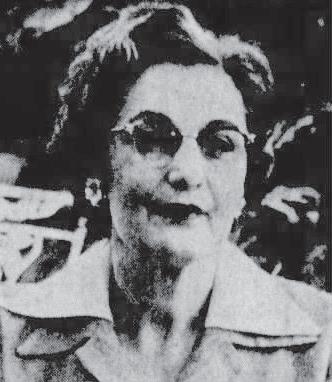



Dominique and Mary Tuminello might not have started out owning a restaurant, but when Tuminello’s Grocery became the mecca for hungry railroad men, they grew their establishment into what would eventually become Tuminello’s — a restaurant touted as serving the finest food between Memphis and New Orleans.
Dominique Tuminello came to the United States from Cefalu, Italy, which is located on the Tyrrhenian coast of Sicily, grandson Skippy Tuminello said.
When Skippy and his wife Gail visited the country years later, he said they had had the opportunity to see where his great-grandfather had lived.
“It was a beautiful palazzo. And grandpa’s
“It was a beautiful palazzo. And grandpa’s people had a big mill, and they raised horses. They were not poor. Italy had been taken over by a dictator, so that’s why the family left.”
Skippy Tuminello
people had a big mill, and they raised horses. They were not poor,” Skippy said. They left because of the political situation. “Italy had been taken over by a dictator, so that’s why
the family left.”
Skippy’s great-grandmother Mary Gerache Tuminello, who was affectionately known later in life as “Mama Tuminello,” was a native of Vicksburg.
“The Geraches came here either before the war or after the Civil War and grandma was a Gerache,” Skippy said.
After Dominique and Mary married, which was around the turn of the 20th century, the couple opened a little restaurant in Greenwood. Several years later, Skippy said, they moved to Vicksburg to be near his great-grandmother’s family.
Upon moving to the River City, the couple bought a small restaurant beside the railroad tracks near the foot of Speed Street Hill”

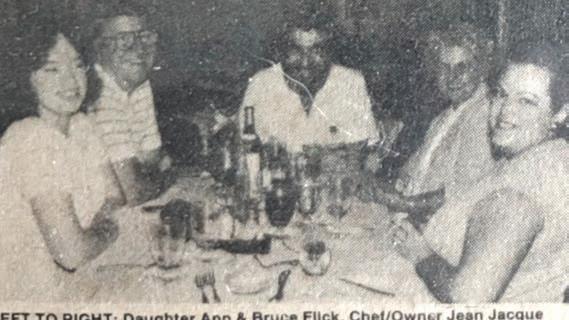

according to an article published in the Vicksburg Evening Post in March 1958. The location had been the site of the Old Marine Hospital.
According to an article that appeared in the March 3, 1957, edition of the Sunday Post Herald, the Old Marine Hospital was a three-story brick building that was established in 1853 for the purpose of caring for sick and disabled merchant seamen. A historical marker is located at the site at 500 Speed St. Subsequent articles gathered from The Vicksburg Post archives stated the building was eventually taken apart and the materials sold, leaving the lot vacant until sometime
between 1915 and 1918 when a two-story building was constructed for Sherman Wilson grocers. By 1921, the building housed Dominique Tuminello’s Grocery.
With the grocery being so close to the railroad tracks, the couple did not only have those living nearby coming in, but also the railroad men.
Vicksburg had an abundance of railroad workers because it was a hub for trains. It had a turntable in which trains could come in and be turned around to travel in all four directions — north, south, east and west.
And because Dominque, also known as Papa Tuminello, and Mary, known as Mama Tuminello, lived upstairs above the grocery, when customers did come in, they would often smell Mama Tuminello’s Italian spaghetti and ravioli cooking.
Knowing that folks enjoyed the aroma, Mama Tuminello said in an interview with the Vicksburg Evening Post in 1958 — an edition that focused on the history of the restaurant and its newest addition — that she asked her husband if they could start serving some of her cooking.
“’Why couldn’t we serve lunch to a few of these people?’” she asked Papa Tuminello.

Therefore, 10 to 15 years after opening the grocery, Tuminello’s Kitchen was born.
Mama Tuminello started out small, cooking just a bit for the trainmen. But as the demand grew, the 1958 article said, she persuaded her husband to set up a few tables inside the store. Next came takeout orders. On Saturdays and Sundays, she cooked special orders of spaghetti and ravioli.
Mama Tuminello’s cooking was becoming
popular, and in about 1930 Tuminello’s as a restaurant came into being.
Tables were set up on the back porch of the family’s home, becoming a “family affair.”
Skippy, whose parents were John and Mary (Mama Tuminello’s daughter-in-law) Tuminello, said he was born inside the restaurant in 1934, upstairs where the family lived. In time the family moved across the street, he said, to what is now Annabelle.
In 1945, a front dining room for the restaurant was added to the one-room store with the original facility being converted into the kitchen.
The 1958 article went on to say that a year later a portion of the Tuminellos’ back porch was converted into the “Marine Dining Room,” named after the building that once stood on the site.
Skippy said it was in the Marine Dining

Room where patrons enjoyed organ music by Al Marble.
In about 1954 the family took on more renovations when the upstairs rooms where the family had lived were converted into a private dining hall.
In 1955, the private dining hall was expanded to accommodate 200 people. A cocktail lounge was also put in and beautiful old iron grill work was added surrounding the upstairs balcony.
For years, Mama Tuminello did all the cooking for the restaurant, but at the age of 72 she retired from the job, the 1958 article stated, and became the “chief taster.”


“No cook in the kitchen thinks his dish ready for the table until it’s been sampled by Mama Tuminello for the ‘Hmmm: it’s just right’ touch.”
Over the years, Mama Tuminello had created some sought-after dishes — recipes that were kept secret — which included her Italian garlic sauce over broiled steak, Oysters Bienville, stuffed shrimp, and Tuminello-style Italian Broiled Chicken.
The 1958 articles referenced in this story were all written to highlight the history of the restaurant and to celebrate its newest addition, a modernized kitchen, and to pay tribute to the three generations who were instrumental in the restaurant’s legacy — Dominique (Papa) and Mary (Mama) Tuminello; John and Mary Tuminello; and the third generation, Donnie, Mary Elizabeth and Skippy Tuminello.
Tuminello’s Kitchen was not only popular with the locals, but its quality food and ambience catered to many notables including governors, movie stars and diplomats.
On May 9, 1959, His Excellency Manlio Brosio, ambassador to the U.S. from Italy, and his wife dined at Tuminello’s during a private luncheon held in their honor. The ambassador and his wife were visiting Vicksburg as part of a tour through Mississippi.
In an article that appeared in the June 17, 1979, edition of the Vicksburg Sunday Post, Mary Tuminello said famous people who had dined at the restaurant included movie stars Tyrone Power, Myrna Loy, Hedy Lamarr and American newscasters Chet Huntley and David Brinkley.
Tuminello’s Kitchen received many notes of praise from its patrons and garnered prestigious awards including a National Award of Excellence that was presented by G.F. Heublein and Bro. Inc, makers of the internationally famous A1 Sauce. Mary Tuminello in the 1979 article said the restaurant “had enjoyed listings by Duncan Hines, all of the


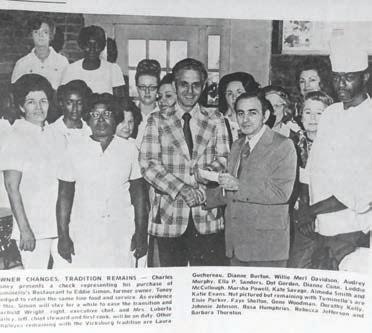




gourmet listings, AAA and many other tour guides.”
From its humble beginnings to a well-renowned restaurant, Tuminello’s was for generations one of Vicksburg’s shining stars. Wedding receptions and engagement parties, birthdays and anniversaries were all celebrated there.
The Tuminello Kitchen operated for more than 40 years. The restaurant was sold in 1964 when Eddie Simon became the owner. Those who followed Simon in ownership were Charles Toney, Joe Mitchell and Malcolm White Sr., and Jacques Parmigiani who owned the restaurant throughout the 80s.
The building itself was always, and is still, owned by the Tuminello family. For those yearning for a bit of nostalgia, just drive down Speed Street. The Tuminello sign might no longer hang from the building at 500 Speed St., but the beautiful brick and old iron grill work will no doubt transport you down memory lane.







Vicksburg Living readers share favorite Mardi Gras photos
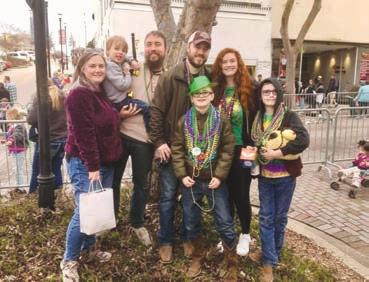
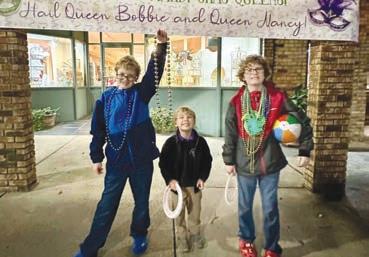


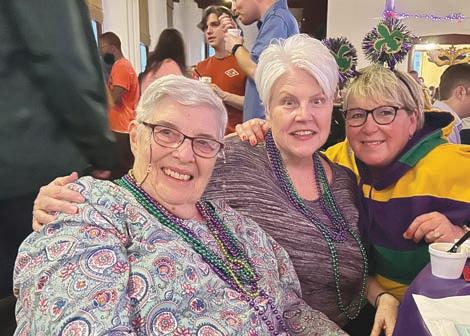

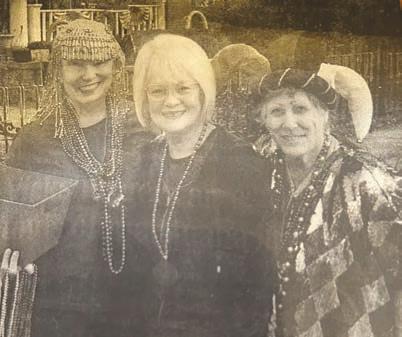
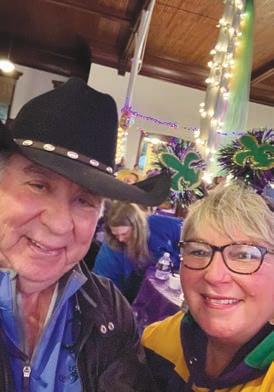





Jinx Chambers, Logan Peay and Ann Ferrell and Gregory Alston




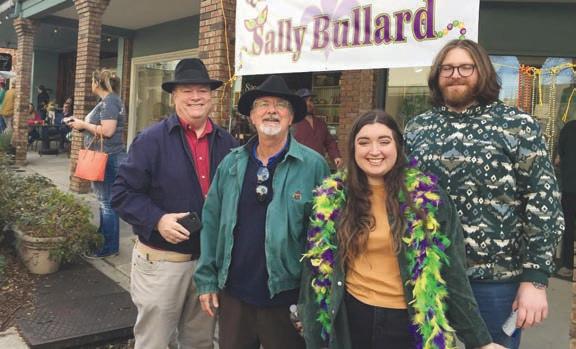
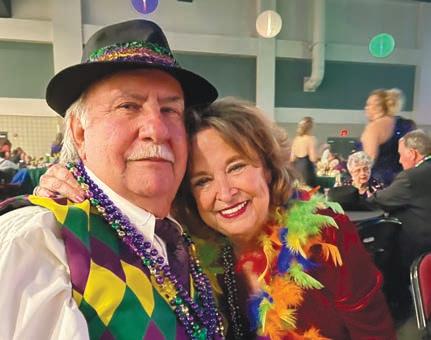
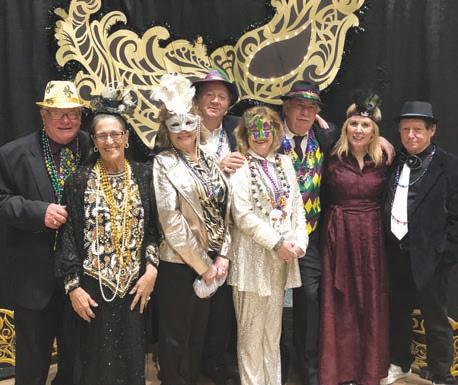
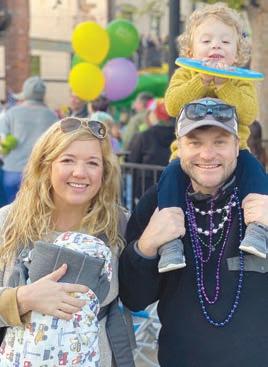
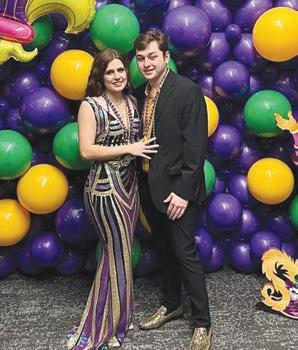

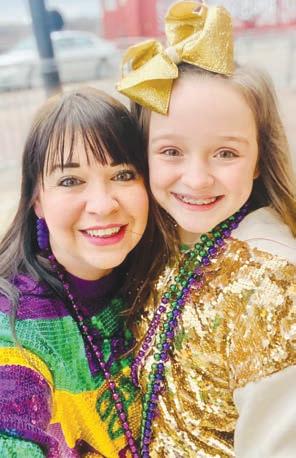
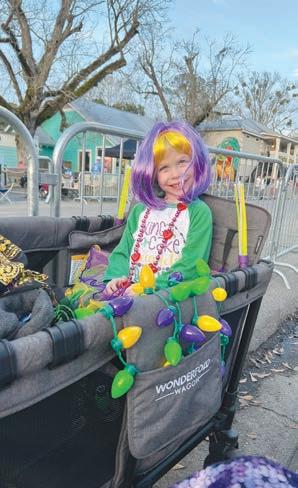
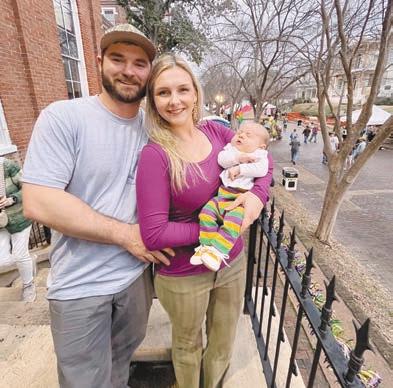






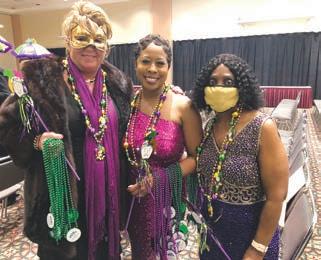
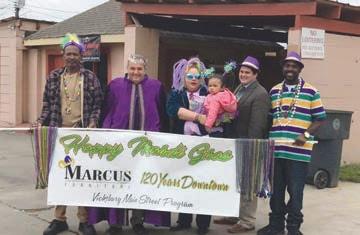
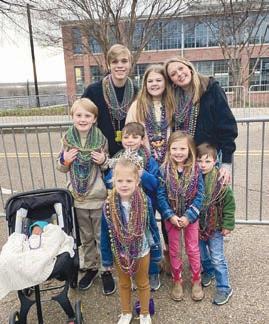
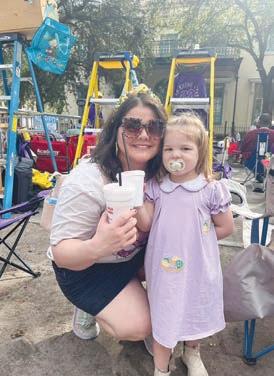



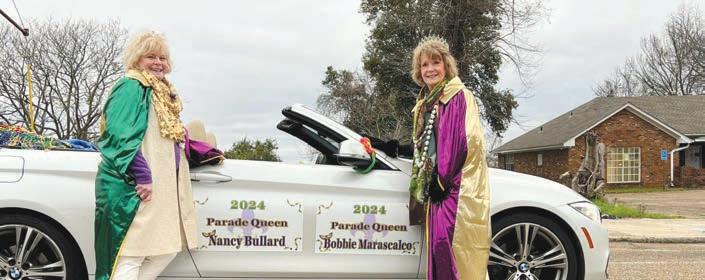
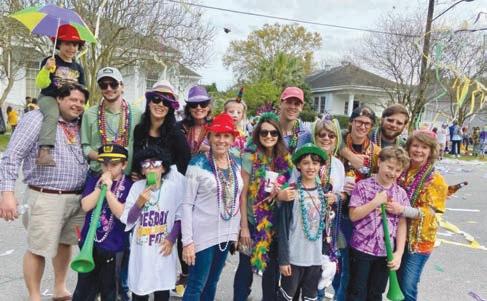
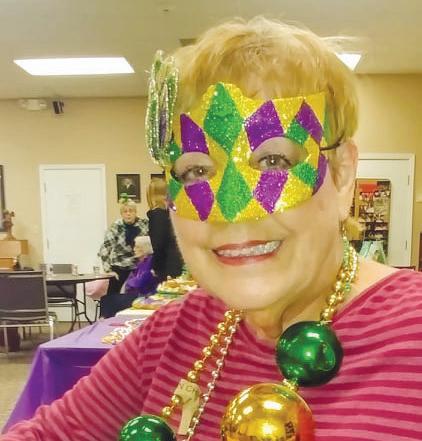
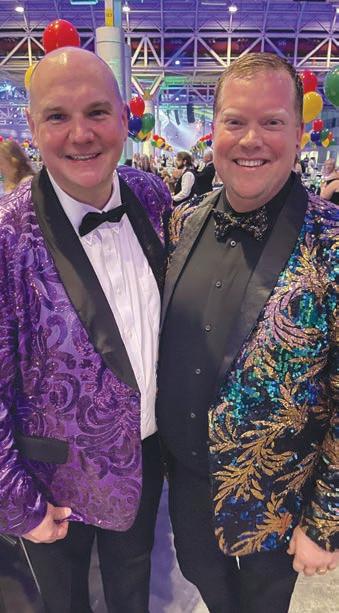


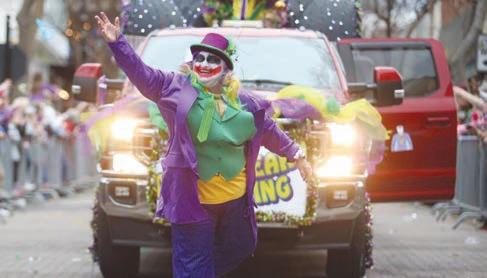



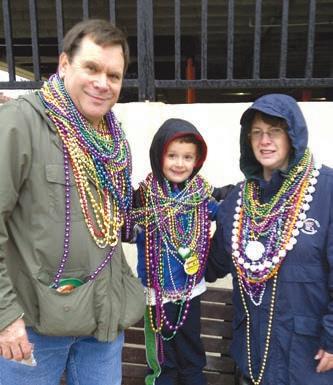











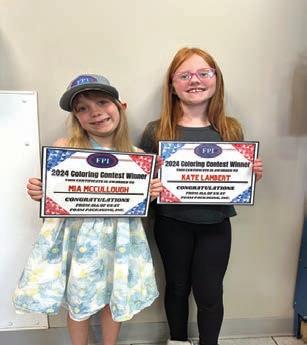


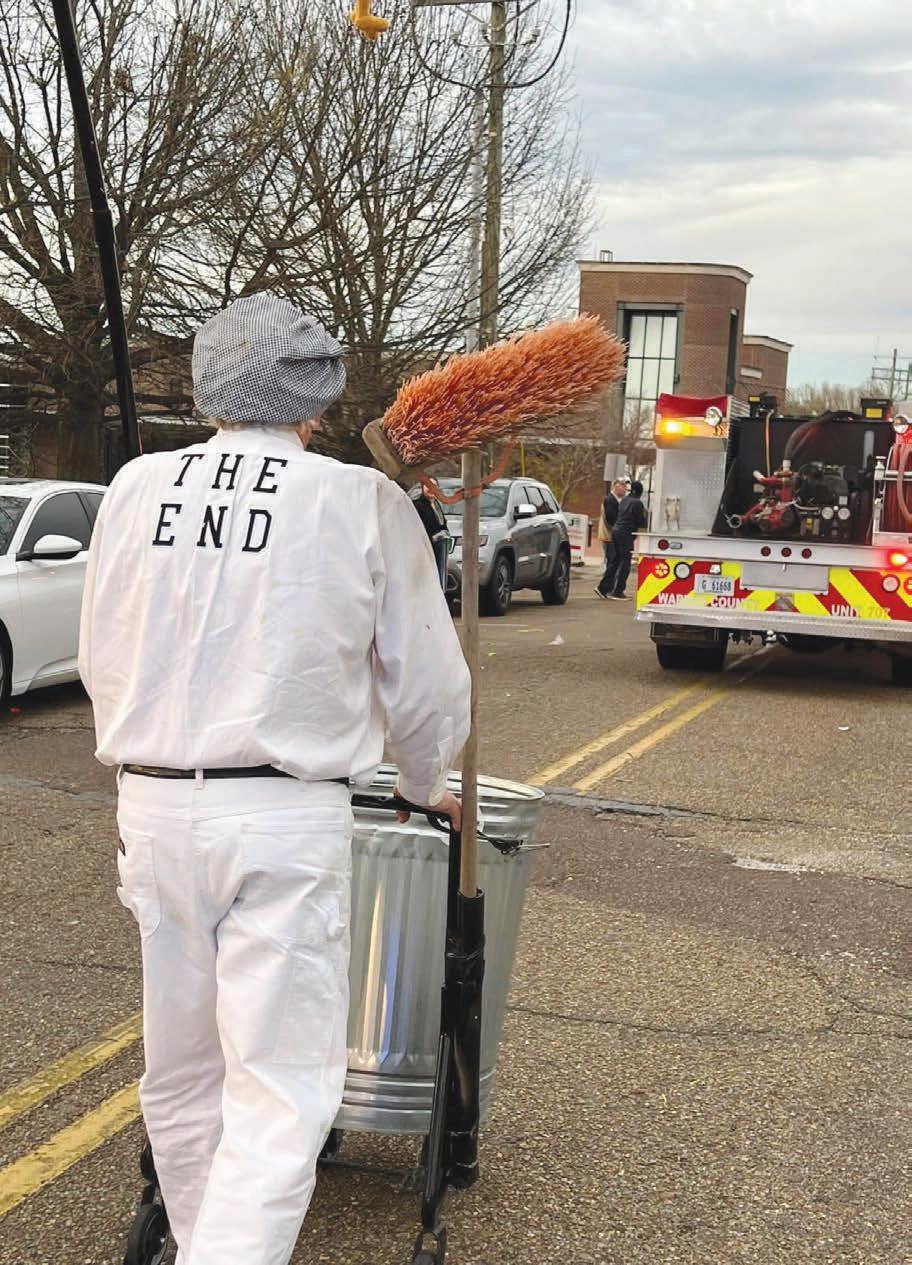
“
“The finish line is just the beginning of a whole new race.”
Unknown
—














